























Let the Big Dogs Eat. Join top business and community leaders at top-tier courses across the US in the #1 Charity Event In Golf.™
Make a Difference. Earn Rewards. Compete as a foursome or sponsor a local event for a chance to earn rewards, including a trip to the Applied Underwriters Invitational National Finals at Big Cedar Lodge.
Contact an Applied rep at 877-234-4450 or email invitational@auw.com to get started.

Follow us for a shot at even more rewards. Applied Underwriters Invitational® | #BigDogGolf invitational.com
Come Golf With Us Events Nationwide 75+ Golfers Participating 11k+ National Finals One ©2024 Applied Underwriters, Inc. Rated A- by AM Best. | www.auw.com



4 | INSURANCE JOURNAL | APRIL 15, 2024 INSURANCEJOURNAL.COM Contents Departments 6 Opening Note 12 Figures 13 Declarations 18 People 20 Business Moves 27 My New Markets News & Markets 8 AIG Sues Newly Launched Dellwood Insurance and Its Founders 10 Chief Risk Officers Say Cybersecurity Most Pressing Risk: Survey 14 The New Norm? Global Insured Losses for Nat Cats Keep Breaking Records: Swiss Re 15 2023 Underwriting Losses Improve but Persist in US P/C Industry 22 Middle-Market Companies Post Record Gains: Chubb Idea Exchange 38 Cyber Risk Strategies to Minimize Business Disruption, Control Liability and Litigation Exposure 40 The Competitive Advantage: Insurance Agency Trust Accounting – More Important than Ever 42 Is It Covered?: Designated Premises, Operations and Projects Endorsements 45 Ask the Insurance Recruiter: Key Attributes to Help You Choose an Insurance Recruiter 46 Weathering the Storm: The Impact of Climate-Driven Risk Reassessments on the Housing Market 48 5 Strategies for Managing Carrier & Client Relationships in a Hard Market 50 Closing Quote: Is IRS Abusing its Authority in Micro-Captives Investigations? Special Report 16 Closer Look: Materiality Matters: D&O Insurers Seek Clarity On SEC Disclosure Rules 24 Spotlight: D&O Risks to Consider When Exploring the New Frontier of Gen AI 28 Special Report: What’s So Great About a Career in an Insurance Agency 28 Special Report: 2024 Young Agents Opinion Survey 34 What Young Agents Think Makes a Good Work Environment 35 What Young Agents Like Most and Least About Their Careers 36 Worst Is Over: Most of Casualty Reserve Hole May Be Filled, Analyst Says April 15, 2024 • Vol. 102 No. 7













THINK AGAIN. Now known as HudsonPro®, our full-service professional lines underwriting and claims handling facility is stronger than ever. Our existing suite of products has been expanded to cover more exposures, from small to large and from conventional to cutting-edge. We proudly serve private companies, non-profits, financial institutions, public companies, groups and individuals, and our seasoned team will craft personalized solutions that fit your needs. When there’s no room for error, THINK HudsonPro.
Admitted coverages underwritten by Hudson Insurance Company and non-admitted coverages underwritten by member companies of Hudson Insurance Group. MANAGEMENT LIABILITY FINANCIAL INSTITUTIONS LIABILITY GENERAL PARTNERS’ LIABILITY PROFESSIONAL LIABILITY MEDICAL PROFESSIONAL LIABILITY CYBER CANNABIS MANAGEMENT LIABILITY Rated A+ by AM Best, FSC XV
HudsonInsPro.com
Opening Note
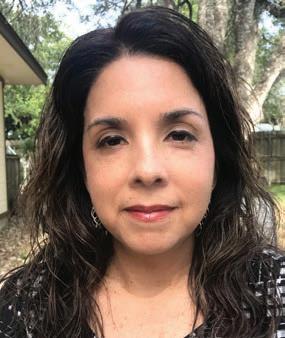
What Young Agents Want
This issue of Insurance Journal features exclusive results from the 2024 Young Agents Survey where young agents nationwide shared their views on the insurance industry and their experiences as agents. (See page 28 for the full report.)
Optimism overall seems to be struggling among the young agents responding to the survey.
According to the survey’s results, young agents said they felt less optimistic about the future of the agency system as well as their career choice compared to last year’s survey. The tough insurance market may play a role.
According to the survey, 35.0% of the young agents responding to the survey feel that finding new markets for their clients in today’s hard market is their biggest challenge.
“Finding insurance companies that actually write insurance,” “maintaining business based on budgets,” and “rising premiums and finding affordable coverage” were mentioned by young agents as the most pressing challenges today.
One agent wrote: “My markets have been suffering a lot lately …. I don’t have a positive outlook right now for policies and my ability to maintain them, or to get new policies on the books. Prices are high and my insureds and our books are suffering hard because of it.”
Despite their concerns, more than half (55.2%) of young agents reported feeling “very optimistic” that their income will be greater in 2024 than in 2023 with another 28.4% feeling “optimistic” that their income will rise again this year over last year’s.
Like in previous years, young agents overwhelmingly report each year that they would still recommend a career in insurance to other young people entering the workforce, even with their concerns.
“Everyone will always need insurance and it takes no true schooling to become an agent. Once you get your license what you do with it is up to you,” one young agent wrote.
‘Everyone will always need insurance and it takes no true schooling to become an agent. Once you get your license what you do with it is up to you.’
Another added: “It’s a career with endless income potential that can be shaped to look however you want it to look and can mirror passions you have in any field.”
This issue also highlights five successful young agents and why they chose a career in insurance. Each offer advice for other young agents. College, no college, second careers, and opportunities for working parents — their advice is as diverse as the industry.

6 | INSURANCE JOURNAL | APRIL 15, 2024 Write the Editor: awells@insurancejournal.com
Andrea Wells V.P. of Content SUBSCRIPTIONS: Call (855) 814-9547 or visit ijmag.com/subscribe Outside the US, call (847) 400-5951 Insurance Journal, The National Property/Casualty Magazine (ISSN: 00204714) is published 22 times annually by Wells Media Group, Inc., 3570 Camino del Rio North, Suite 100, San Diego, CA 92108-1747. Periodicals Postage Paid at San Diego, CA and at additional mailing offices. SUBSCRIPTION RATES: $17.95 per copy, $27.95 per special issue copy, $195 per year in the U.S., $295 per year all other countries. DISCLAIMER: While the information in this publication is derived from sources believed reliable and is subject to reasonable care in preparation and editing, it is not intended to be legal, accounting, tax, technical or other professional advice. Readers are advised to consult competent professionals for application to their particular situation. Copyright 2024 Wells Media Group, Inc. All Rights Reserved. Content may not be photocopied, reproduced or redistributed without written permission. Insurance Journal is a publication of Wells Media Group, Inc. POSTMASTER: Send change of address form to Insurance Journal, Circulation Dept, PO Box 708, Northbrook, IL 60065-9967 ARTICLE REPRINTS: Contact (800) 897-9965 x125 or visit insurancejournal.com/reprints
Chairman of the Board Mark Wells | mwells@wellsmedia.com Chief Executive Officer Joshua Carlson | jcarlson@insurancejournal.com ADMINISTRATION / CIRCULATION Chief Financial Officer Terry Freeburg | tfreeburg@wellsmedia.com Circulation Manager Elizabeth Duffy | eduffy@wellsmedia.com Staff Accountant Sarah Kersbergen | skersbergen@wellsmedia.com EDITORIAL V.P. of Content Andrea Wells | awells@insurancejournal.com Executive Editor Emeritus Andrew Simpson | asimpson@wellsmedia.com National Editor Chad Hemenway | chemenway@insurancejournal.com Southeast Editor William Rabb | wrabb@insurancejournal.com South Central Editor/Midwest Editor Ezra Amacher | eamacher@insurancejournal.com West Editor Don Jergler | djergler@insurancejournal.com International Editor L.S. Howard | lhoward@insurancejournal.com Content Editor Allen Laman | alaman@wellsmedia.com Assistant Editor Jahna Jacobson | jjacobson@insurancejournal.com Copy Editor Stephanie Jones | sjones@insurancejournal.com Columnists & Contributors Contributors: Elizabeth Blosfield, David Dawson, Matthew Ferguson, James Gammell, Travis Hodges, Brandon D. Hollinder, Esq., Susanne Sclafane, Van Carlson Columnists: Chris Burand, Mary Newgard, Bill Wilson SALES / MARKETING Chief Marketing Officer Julie Tinney | jtinney@insurancejournal.com West Sales Dena Kaplan | dkaplan@insurancejournal.com Romeo Valdez | rvaldez@insurancejournal.com Kelly DeLaMora | kdelamora@wellsmedia.com South Central Sales Mindy Trammell | mtrammell@insurancejournal.com Southeast and East Sales (except for NY, PA, CT) Howard Simkin | hsimkin@insurancejournal.com Midwest Sales Lisa Whalen | (800) 897-9965 x180 East Sales (NY, PA and CT only) Dave Molchan | (800) 897-9965 x145 Advertising Coordinator Erin Burns | eburns@insurancejournal.com Insurance Markets Manager Kristine Honey | khoney@insurancejournal.com Sr. Sales & Marketing Coordinator Laura Roy | lroy@insurancejournal.com Marketing Administrator Alberto Vazquez | avazquez@insurancejournal.com Marketing Director Derence Walk | dwalk@insurancejournal.com DESIGN / WEB / VIDEO V.P. of Design Guy Boccia | gboccia@insurancejournal.com Web Team Lead Josh Whitlow | jwhitlow@insurancejournal.com Ad Ops Specialist Jeff Cardrant | jcardrant@insurancejournal.com Web Developer Terrance Woest | twoest@wellsmedia.com Web Developer Jason Chipp | jchipp@wellsmedia.com Digital Content Manager Ashley Cochrane | acochrane@insurancejournal.com Videographer/Editor Ashley Waldrop | awaldrop@insurancejournal.com ACADEMY OF INSURANCE Director Patrick Wraight | pwraight@ijacademy.com Online Training Coordinator George Jack | gjack@ijacademy.com

more at aig.com
Learn
News & Markets
AIG Sues Newly Launched Dellwood Insurance and Its Founders
By Chad Hemenway
American International Group and a group of its excess and surplus lines subsidiaries have filed suit against Dellwood Insurance Group and three former AIG executives who launched the nationwide E&S lines insurance holding company earlier this year.
According to the lawsuit filed in U.S. District Court in New Jersey, AIG seeks to stop the “unlawful misappropriation of AIG’s trade secrets and confidential information” allegedly committed by Michael Price, Kean Driscoll and Thomas Connolly. AIG is also suing for alleged breaches of contract, breaches of fiduciary duty, unfair competition, and violation of the Computer Fraud and Abuse Act. The insurer is seeking injunctive relief and damages.
$250 million in capital and backed by RenaissanceRe, PartnerRe, Starr Insurance and Central Insurance. Individual investors include Dominic Addesso, David Delaney, VJ Dowling, Jim Hays and principals from Stone Point Capital. Howden Tiger Capital Markets & Advisory served as Dellwood’s financial advisor and Foley & Lardner served as Dellwood’s legal advisor.

Price was AIG’s CEO of North America General Insurance before leaving the company on June 30, 2023. Driscoll, AIG’s former global chief underwriting officer of General Insurance left effective March 3 — after his “garden leave” and just days before the launch of Dellwood was announced, according to the lawsuit. Connolly was formerly chief financial officer of AIG’s North America General Insurance.
middle-enterprise risks.
“This business is directly competitive with those of the AIG E&S Insurers,” said AIG. “AIG was at the forefront of a recent market trend of moving the E&S market from a dual distribution model to a wholesale-only model. AIG developed its own unique and proprietary version of the contract bind process that eliminated the need for hiring a fleet of sophisticated underwriters, a substantial cost. Dellwood appears to have adopted that strategy and, on information and belief, intends to leverage the relevant expertise that Price, Driscoll, Connolly, and other former employees learned at AIG to develop a company that competes against AIG not only in the E&S market but in other segments as well.”
New Jersey-based Dellwood announced its launch in early March with more than
Price and Driscoll are now CEO and CUO, respectively, of Dellwood, formed for P/C wholesale brokers with eye on small- and

According to AIG, Price and Driscoll each have agreements with the insurer that prohibit them from competing with AIG, soliciting customers, disclosing confidential information, or disparaging their former employer. AIG said the duo “breached their obligations to AIG long before their non-competes expired,” and raised capital to start Dellwood by actively marketing the start-up to investors — competing against AIG.
Furthermore, AIG said Price and Driscoll violated agreements not to solicit AIG employees by hiring Connolly. “Worse, Price and Driscoll convinced Connolly to work for Dellwood as a secret agent during at least his final month at AIG, which concluded March 15, 2024,” said AIG, adding that it has evidence Connolly did work for Dellwood while still employed with AIG, sent confidential information to his personal email, and tried to get coworkers to join him at Dellwood.
Insurance Journal reached out to Dellwood for comment but they said that they do not comment on active litigation.
8 | INSURANCE JOURNAL | APRIL 15, 2024 INSURANCEJOURNAL.COM
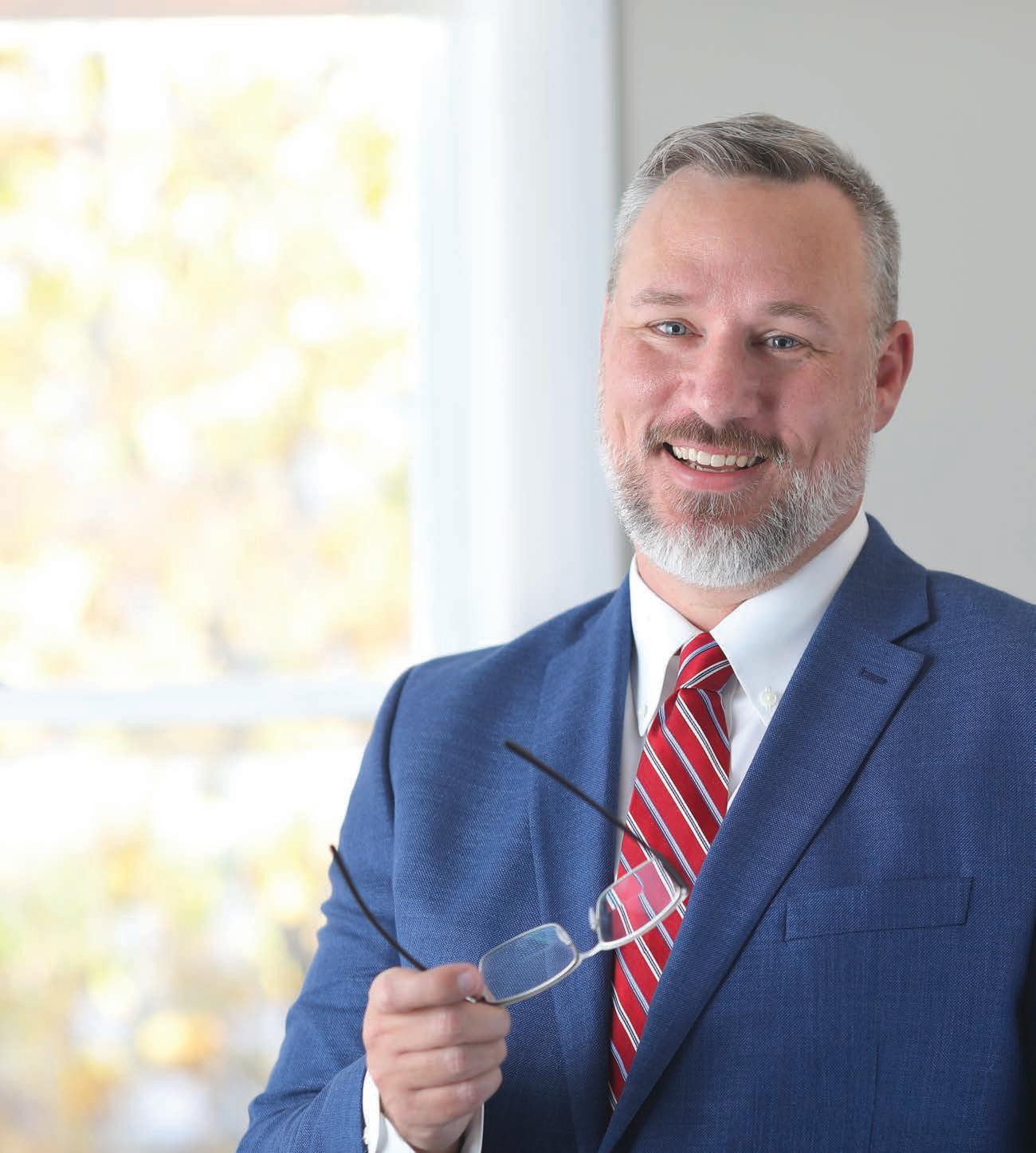

AM Best A++ Rating I Ward’s Top 50 2001-2018 I 96% Claims Satisfaction I 120+ Niche Industries “ AM Best A++ Rating I Ward’s Top 50 2001-2023 I 95.7% Claims Satisfaction I 120+ Niche Industries Philadelphia Insurance Companies is the marketing name for the property and casualty insurance operations of Philadelphia Consolidated Holding Corp., a member of Tokio Marine Group. All admitted coverages are written by Philadelphia Indemnity Insurance Company. Coverages are subject to actual policy language.
News & Markets
Chief Risk Officers Say Cybersecurity Most Pressing Risk: Survey
By Jahna Jacobson
In an inaugural EY/Institute of International Finance (IIF) global insurance risk management survey, cybersecurity was ranked as the highest concern for chief risk officers.
CROs surveyed said the top five risk types or risk management types for the coming year were:
• 53% – Cybersecurity risk
• 35% – Insurance risk (e.g., underwriting risk, including lapses, catastrophic [CAT] and longevity risk)
• 32% – Business model change/ transformation
• 26% – Credit risk (including country, sovereign and concentration risk)
• 24% – Tied between capital allocation, interest rate risk and technology risk (e.g., risk of inadequate management or maintenance of technology systems, networks, assets and applications)
Human capital risks (22%) also ranked high for the one-year outlook, reflecting a tightening labor market. Overall, 64% of participating CROs said attracting talent will become increasingly difficult in the long term. Third-party risk reflects scarce talent and the industry’s increased connectivity; more insurers seek to access specific capabilities and technologies via ecosystems and alternative sourcing models.
Concerns shift when the view is extended to emerging risks over the next three years, according to survey data from 68 insurance carriers across 15 countries. While cybersecurity risk still tops the list (68%) for all CROs surveyed, the top five concerns are rounded out with more global issues, including geopolitical risk (56%), environmental risk (50%), machine learning and artificial intelligence (43%), and skills shortage/re-skilling of the existing workforce (41%).
Political uncertainty in this U.S. election year heightens the risks; most survey respondents called out geopolitical risks as one of the most pressing over the next

three years. CROs see geopolitical risks mainly in terms of macroeconomic impact (79%), increased cyber warfare (67%) and regulatory changes (64%).
American survey respondents were twice as likely than their European counterparts to expect a focus on GenAI in the next five years. Roughly a quarter of firms have implemented core components of the necessary frameworks to address AI-related risks. Despite a reliance on growing ecosystems and alliances to drive efficiencies (43%) and acquire new customers (59%), almost half (46%) viewed managing third-party cyber risk as a threat to their operational resilience.
While confident managing emerging financial and regulatory risk, less than a quarter (22%) of respondents said they were implementing AI, Gen AI and machine learning. Those adopting AI are doing so pragmatically with guardrails in place — with 50% establishing controls to help ensure the responsible use of AI and ML in decision-making. Respondents cited heighted risk in modeling, including risk of hallucination and explainability, (61%), data privacy (49%) and consumer fairness and algorithmic bias (37%).
More than two-thirds (69%) of CROs surveyed are integrating ESG into their risk management framework, and 87% are incorporating ESG standards into investments. While many CROs feel confident in their organization’s ability to integrate ESG into their decision-making, only 3% of respondents have a complete understanding of their climate-change risk exposure, and just over a third (36%)
stated that climate risk is being integrated into business strategy — although positive action is forthcoming. Over half (53%) cited ESG-related investments and rewarding positive ESG behavior (34%) as the leading products or features with the most growth potential.
Still, 72% of CRO respondents are confident they have the capacity to manage change associated with increased risk, while 74% see budget as their most significant threat to accelerating critical digital transformation strategies.
“Insurance CROs continue to hunt for opportunities to drive growth and reduce the operational risk,” said Isabelle Santenac, EY global insurance leader.
“With record-breaking natural catastrophes in 2023, the pressure on carriers to tackle the increasing multibillion-dollar protection gap is compounded by shrinking budgets and scarce talent to tackle some of the most pressing climate-related disasters our generation has faced.”
Despite operating in a “quicksand environment,” she said, “CROs are meaningfully investing in ecosystems, utilizing AI to tackle the rise in fraud, and mitigating future risk by laying the groundwork to attract talent to an industry teeming with potential.”
Confidence remains despite facing what some call a “polycrisis.”
“Faced with complex risks, rapid technological advancements and resource and talent constraints, our survey results highlight the resilience and adaptability of insurance CROs and their strong commitment to digital transformation,” said Mary Frances Monroe, director, insurance regulation and policy at the Institute of International Finance.
The events of 2023 increased the pace at which insurance carriers have sought to strengthen their front line with risk management practices, with 59% of respondents improving their liquidity management policies, procedures and practices and more than half (56%) updating their asset liability management (ALM) framework, in the last 12 months.
10 | INSURANCE JOURNAL | APRIL 15, 2024 INSURANCEJOURNAL.COM






When you’ve been in business for as long as we have at UFG Insurance, you understand what matters most to your customers. For us, it’s our commitment to delivering deep underwriting expertise with the personal relationships and responsive service our partners and policyholders have come to expect and appreciate from UFG.

Think UFG for new business opportunities today — we deliver what matters most. ufginsurance.com
© 2024 United Fire & Casualty Company. All rights reserved.
INSURANCE MIDDLE MARKET SMALL BUSINESS CONSTRUCTION SPECIALTY E&S SURETY
THINK UFG Deep expertise. Personal relationships. Responsive service.
$10 Million Figures

The U.S. State Department is offering up to $10 million for information on the “Blackcat” ransomware gang who hit the UnitedHealth Group’s tech unit and snarled insurance payments across America. UnitedHealth said it was beginning to clear a medical claims backlog of more than $14 billion following the cyberattack, which caused wide-ranging disruption starting in late February, Reuters reported.
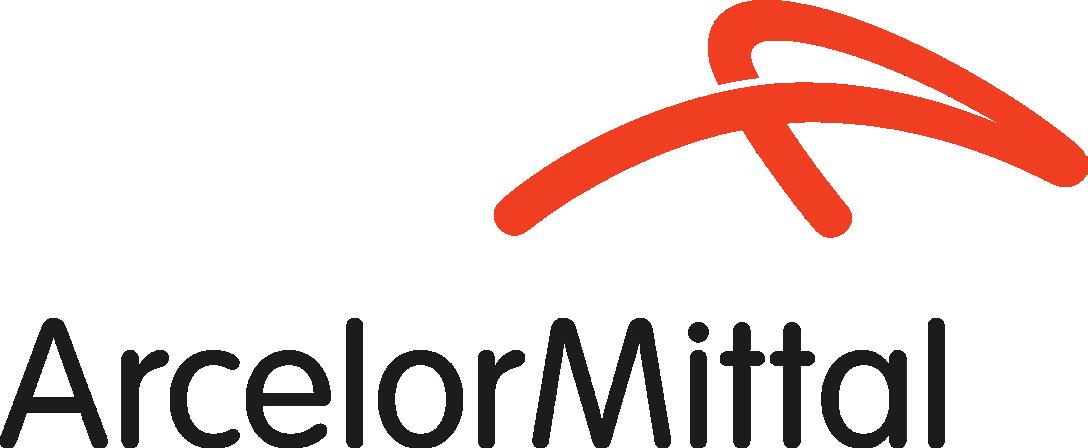
$253,515
The amount in penalties proposed by OSHA against ArcelorMittal Tubular Products USA LLC for failing to protect a 60-year-old employee from severe injuries after they became caught in a pinch point created by a bundle of steel tubes and a rotating roller conveyor in December 2023 at the company’s Shelby, Ohio, facility. ArcelorMittal Tubular Products USA operates manufacturing facilities in Ohio in Marion and Shelby.

20-25
The number of named storms
Accuweather meteorologists are predicting for this year’s Atlantic hurricane season. Accuweather predicts 2024 hurricane season will feature eight to 12 hurricanes, including four to seven major hurricanes. The all-time record of 30 named storms in one season could be broken this year, according to Accuweather.

19%
The average decrease in workers’ compensation insurance loss cost approved by Maine Insurance Superintendent Robert Carey. The new loss costs went into effect for new and renewing policies on April 1. Carey said that if all insurers fully adopt the decrease, Maine businesses could save an estimated $55 million.
12 | INSURANCE JOURNAL | APRIL 15, 2024 INSURANCEJOURNAL.COM
Declarations

Baltimore Bridge Collapse
“While the total cost of the bridge collapse and associated claims will not be clear for some time, it is likely to run into the billions of dollars.”
— Said Matilde Jakobsen, senior director, analytics, AM Best, commenting on the possible impact the collapse of Baltimore’s Francis Scott Key Bridge will have on insurers. The container ship Dali struck the bridge on March 26 after the ship lost power. The ship is owned by Singapore-based Grace Ocean and was chartered by the shipping giant Maersk, according to Bloomberg.

Louisiana Insurance Crisis
“If we don’t enact bold change this session, I believe our ongoing insurance crisis will not just stay the same — it will get worse.”
— Louisiana Insurance Commissioner Tim Temple said, urging state lawmakers to modernize Louisiana’s regulatory framework and address legal system abuse – or risk insurers leaving the catastrophe-prone state. Temple, who took over as state insurance commissioner in January, said insurers and reinsurers have repeatedly told him they have three major concerns for doing business in the state: catastrophe exposure, overregulation and a poor legal environment.
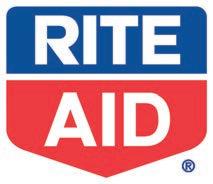
Rite Aid Bankruptcy
“We have reached an agreement on all key points with all key economic stakeholders.”
— Rite Aid attorney Aparna Yenamandra said at a bankruptcy court hearing in Trenton, New Jersey, after the pharmacy chain Rite Aid reached a settlement with its lenders, the U.S. Department of Justice, and drug supplier McKesson Corp. in its bankruptcy case. Before it filed for bankruptcy, Rite Aid faced over 1,600 lawsuits alleging that it ignored red flags and illegally filled prescriptions for addictive opioid medication

Amazon Drivers’ Suit
“Far too often, especially in the emerging gig economy, big and powerful companies like Amazon use the misclassification of employees as independent contractors to deny working people essential workplace rights like minimum wages, overtime pay, and unemployment insurance.”
— Stephanie Bloomingdale, president of the Wisconsin AFL-CIO, commented after the Wisconsin Supreme Court let stand a lower court ruling that declared some delivery drivers for Amazon were employees as the state argued, not independent contractors as the online retail giant contended.

NFIP Discounts Altered
“Without any prior notice, FEMA verbally informed Lee County and some of its municipalities … that it was altering discounts on National Flood Insurance Program (NFIP) premiums that allow residents to save up to 25%, delivering a blow to the community as it continues to recover from the devastation of Hurricane Ian.”
— Reads a statement from Lee County, Florida, officials, after FEMA said some property owners in southwest Florida will face 25% higher flood insurance rates because local officials reportedly allowed subpar rebuilding for flood-damaged homes.

Maui Wildfire Report Delay
“The purpose of this investigation is to make sure that this tragedy never happens again, period.”
— Hawaii Attorney General Anne E. Lopez’s office said in a statement, blaming the delay of the release of a key report into last year’s deadly Maui wildfires on county agencies that forced investigators to issue subpoenas. The Fire Safety Research Institute was selected to provide a scientific analysis of the fire. Its “team encountered unexpected delays when gathering the critical facts for review, which had a direct impact on the rescheduled Phase One report release date,” the AG’s office said.
APRIL 15, 2024 INSURANCE JOURNAL | 13 INSURANCEJOURNAL.COM
News & Markets
The New Norm? Global Insured Losses for Nat Cats Keep Breaking Records: Swiss Re
 By L.S. Howard
By L.S. Howard
Global insured losses from natural catastrophes in 2023 exceeded US$100 billion for the fourth consecutive year — an indication of the new norm for nat cat losses, according to Swiss Re.
Other record-breaking numbers for 2023 included the total of insured-loss-inducing catastrophes (which hit a record 142), and the insured price tag for severe convective storms (SCS), which reached US$64 billion for the first time, said the report published by Swiss Re Institute, Swiss Re’s research unit. The report is titled “Natural catastrophes in 2023: gearing up for today’s and tomorrow’s weather risks.”
Although the earthquake in Turkey and Syria was last year’s costliest catastrophe with estimated insured losses of US$6.2 billion, event frequency from severe convective storms was the main driver of 2023’s nat cat losses, said Swiss Re.
The report describes SCS as an umbrella term for a range of hazards including tornadic and straight-line winds, as well as large hailstones.
The report said that 85% of total SCS insured losses originated in the United States and losses are growing the fastest in Europe where they have topped US$5
billion in each of the last three years.
Most of the record-breaking numbers of natural catastrophes were brought by medium-severity events, which Swiss Re defines as events with losses in the range of US$1 billion to US$5 billion. The number of medium-severity events, which can include SCS, has grown by an average of 7.5% each year since 1994, almost double the 3.9% increase of all catastrophes.
“After tropical cyclones, SCS have become the second largest loss-making peril. As with other perils, rising exposures due to economic and population growth, and urbanisation are the main forces driving SCS losses higher,” the report continued.
Hailstorms are the main contributor to insured losses from SCS, responsible for 50%–80% annually of all SCS-driven insured losses, Swiss Re reported, pointing to the example of northern Italy where storms with giant hail stones brought insured damages of US$5.5 billion in 2023.
Global Protection Gap
Last year, economic losses from natural catastrophes reached US$280 billion, meaning that 62% of the global losses were uninsured, amounting to a global protection gap of US$172 billion in 2023,
up from US$153 billion in 2022 and the previous 10-year average of US$134 billion. (Economic losses include all damage, both insured and uninsured.)
Swiss Re noted that global insured losses from natural disasters outpaced global economic growth over the past 30 years.
“From 1994 to 2023, inflation-adjusted insured losses from natural catastrophes averaged 5.9% per year, while global GDP grew by 2.7%. In other words, over the last 30 years, the relative loss burden compared to GDP has doubled,” said a press release accompanying the report.
Swiss Re forecasts that annual insured losses will grow by 5%-7% over the long term, which is in line with actual loss increases over the last 30 years.
“Several factors suggest losses will continue to rise: property exposures continue to grow, especially in areas of already high-value concentrations. Exposure growth also tends to be focused in areas of higher catastrophe risk such as flood plains or on coastlines,” the report said. “So far, the impact of changing climates has been small. However, we expect that the contribution from severe weather and other events will likely rise.
By extrapolating the aforementioned long-term growth trend, we estimate that
14 | INSURANCE JOURNAL | APRIL 15, 2024 INSURANCEJOURNAL.COM
today’s insured losses could double in 10 years.”
Accumulation of Assets in Vulnerable Regions
“Even without a historic storm on the scale of Hurricane Ian, which hit Florida the year before, global natural catastrophe losses in 2023 were severe,” commented Jérôme Jean Haegeli, Swiss Re’s group chief economist, in a statement.
“This reconfirms the 30-year loss trend that’s been driven by the accumulation of assets in regions vulnerable to natural catastrophes. In the future, however, we must consider something more: climate-related hazard intensification,” he added. “Fiercer storms and bigger floods fuelled by a warming planet are due to contribute more to losses. This demonstrates how urgent the need for action is, especially when taking into account structurally higher inflation that has caused post-disaster costs to soar.”
In its conclusion, the Swiss Re report stated: “To better deal with the losses of today and prepare for the weather of tomorrow, loss potential needs to be reduced so that insurance is more affordable, protection gaps are narrowed and the business of insurance remains sustainable. Lowering loss potential requires climate change mitigation, loss reduction, and prevention and adaptation actions to minimise exposure and vulnerability to hazards.”
Other findings from the report include:
• Total insured losses, which include natural catastrophes (US$108 billion) and man-made losses (US$9 billion) were $117 billion for 2023.
• Total economic losses for the year were $291 billion, which comprised natural catastrophes costing $280 billion, and man-made events costing $11 billion.
• The costliest industry event, the earthquake in Turkey and Syria, had insured losses of US$6.2 billion, but given the region’s low insurance penetration, 90% of all property damage was uninsured.
• The Turkey and Syria earthquake was the biggest humanitarian disaster of the year, claiming close to 58,000 lives.
2023 Underwriting Losses Improve but Persist in US P/C Industry
By Allen Laman & Susanne Sclafane
The U.S. property/casualty insurance industry recorded a slight underwriting improvement in 2023, but losses persisted, according to a new AM Best report.
Preliminary data from the global credit rating agency shows that the industry posted a $21.2 billion net underwriting loss last year. That was down from the $24.9 billion underwriting loss recorded in 2022.
AM Best’s figures are derived from annual statutory statements received as of March 8, 2024, and represent an estimated 97% of the total P/C industry’s net premiums written. The numbers show that the P/C industry’s combined ratio improved by 0.9 percentage points to 101.6 in 2023, according to the AM Best’s Special Report, “First Look: 2023 U.S. Property/Casualty Financial Results.”
“Catastrophe losses accounted for an estimated 8.7 points on the combined ratio, up from 7.3 points in 2022, driven by record severe convective storm losses,” AM Best said. “The underwriting loss came despite a 9.9% growth in net earned premiums, as this was countered by a 10% increase in incurred losses and loss adjustment expenses, a 6.4% rise in other underwriting expenses and a 4.5% increase in policyholder dividends.”
Net written premiums jumped 10.4% to $837.7 billion in 2023.
AM Best reported that with net investment income “virtually unchanged” from the prior year, the lower 2023 underwriting loss “boosted pre-tax operating income by 4.8% to $50 billion. A $51.1 billion change in net realized capital gains at National Indemnity Company resulted in net income for the industry more than doubling to $90.1 billion.”
In a previously published report, AM Best wrote that the U.S. P/C industry’s underwriting loss for 2023 reached a 10-year high of $38 billion, with a corresponding combined ratio of 103.7. According to an AM Best spokesperson, the data in the earlier report included third-quarter results and a fourth-quarter estimate based on historical data. The data in the new report is based on yearend filings to date. The spokesperson said the gap (from a P/C underwriting loss of $38 billion in earlier reporting to a loss of $21.2 billion now) might be explained by reserves. Analysts think it is possible that either a majority of P/C companies — or enough of the largest companies — decided they were overly conservative with reserves for prior accident year losses, and may have made significant enough adjustments to these reserves so the year-end total was decreased to a loss of $21.2 billion.
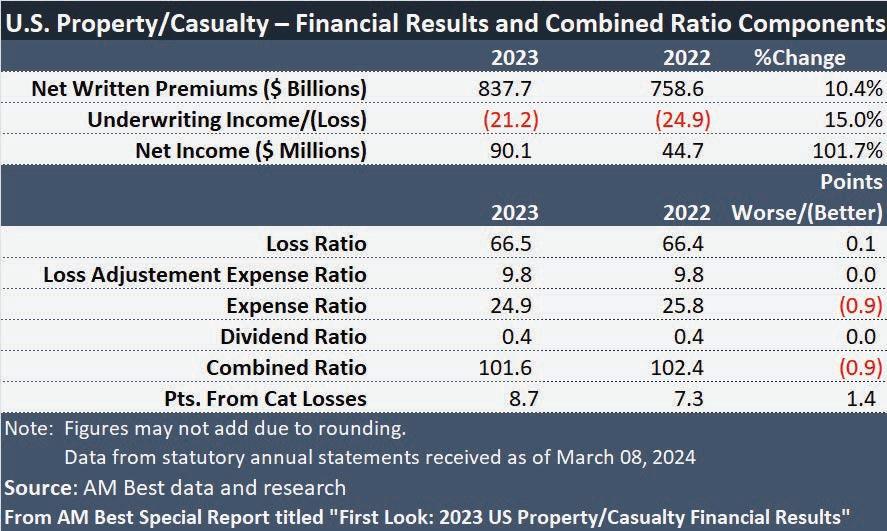
APRIL 15, 2024 INSURANCE JOURNAL | 15 INSURANCEJOURNAL.COM
Closer Look: Directors & Officers
Materiality Matters: D&O Insurers Seek Clarity On SEC Disclosure Rules
 By Elizabeth Blosfield
By Elizabeth Blosfield
The U.S. Securities and Exchange Commission adopted final rules almost a year ago in July 2023 requiring public companies to disclose both material cybersecurity incidents and material information regarding their cybersecurity risk management. However, for directors and officers and their insurers, questions remain about how to actually define a material incident.
“What is material?” asked Rita Perez, head of financial lines claims, North America, at AIG. “We don’t know what the answer to that is, and I think that’s where the insurance
industry is struggling too from a coverage standpoint.”
Perez was speaking on a panel about the regulatory landscape and D&O coverage at the Professional Liability Underwriting Society’s 2024 D&O Symposium in New York City.
“I think in my experience since I joined private practice as a reform regulator, what I’m observing is people really struggling with making materiality determinations because it’s not always a quantitative assessment,” said Aliceson Kristina Littman, partner at Willkie Farr & Gallagher LLP. Prior to joining private practice, Littman served as chief of the Crypto Assets and Cyber Unit
in the Division of Enforcement of the SEC, where she said companies were struggling to define the materiality of an incident even prior to the new disclosure rules.
“Certainly, when I was at the SEC and I was talking to defense counsel, we were investigating a company for a failed disclosure, and they would always argue, ‘Oh, well this is a system that’s only used by this one business line, and that business line is a very small part of our revenue,’” she said. “And I would say, ‘I don’t think that matters that much. We’re talking about data relating to children.’ So if it’s a qualitatively material incident because of the nature of the
information that’s compromised, we may still need to make a disclosure. And I think that’s where those assessments just get really tricky.”
Litigation Volatility
The SEC rules, originally proposed in March 2022, not only require disclosure within four days of any cybersecurity incident a public company believes is material in nature, scope, timing and impact, but the rules also require public companies to describe their process for assessing, identifying and managing cyber risk, as well as the likely effects of a cyber incident on their company. This also means that companies will be required
16 | INSURANCE JOURNAL | APRIL 15, 2024 INSURANCEJOURNAL.COM
to describe their board of directors’ and management’s role in overseeing cyber risks.
Erik Gerding, director of the Division of Corporation at the SEC said in December remarks that the aim of the rules is to provide investors with timely, consistent, and comparable information about an important set of risks that can cause significant losses to public companies and their investors.
But the insurance industry sees challenges on the horizon. Jim Rizzo, product leader for U.S. D&O and executive risks at Beazley, predicted last year on The Insuring Cyber Podcast that for D&O insurers, the rules may create potential volatility in the form of litigation.
“I foresee underwriters sounding a little bit more like cyber underwriters in their meetings with the types of questions that we have to ask to get a better foundation and understanding of how our insureds are prepared both pre- and post-event,” he said, adding that companies could likely be scrutinized for their pre-event posture, their post-event disclosures, as well as the handling of the event itself. “All of these critiques will come from the benefit of hindsight, which can result in material litigation expense for our insureds as well as the carriers.”
Littman echoed these thoughts, adding that the SEC is likely to pursue cases against individuals at an increasing rate to drive corporate accountability around these issues.
“I think there’s a general view at the SEC right now among the leadership there that cyber incidents at public issuers — all companies really — are under-disclosed and that
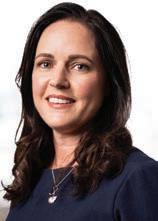
‘What I’m observing is people really struggling with making materiality determinations because it’s not always a quantitative assessment.’
Aliceson Kristina Littman, partner at Willkie Farr & Gallagher LLP.

‘You have sometimes, with large public companies, 10 or 12 different firms involved in defending these SEC investigations, which gets really, really expensive. That just increases the cost astronomically.’
Rita Perez, head of financial lines claims, North America, at AIG.
represented by a different firm and ensuring that they are adequately represented by appropriate defense counsel. These conflicts often cost a lot,” she said. “You have sometimes, with large public companies, 10 or 12 different firms involved in defending these SEC investigations, which gets really, really expensive. That just increases the cost astronomically.”
This means determining adequate coverage is important, she said.
there are more incidents than investors know about and that investors are hearing about,” she said. “This isn’t new, but it’s certainly true of the current administration. This kind of perennial view that individual accountability drives corporate accountability.”
She said more companies are likely to see multiple SEC actions with charges brought against individuals.
“The view is that if you start bringing charges against individuals, you really start to affect change because if individuals think that their own neck is on the line then they might be more inclined to do a better job,” she said. “I do think they’re always looking for individuals. I mean that’s kind of the unfortunate reality, and I
think you’re going to hear a lot of CISOs making sure that their D&O policies are effective.”
Defense Costs
Perez said, however, that liability itself ultimately shouldn’t be the main question from a D&O carrier standpoint. “It’s the defense cost exposure,” she said. “You can easily eat through a primary policy with defense costs alone and probably go up the tower with defense costs alone.”
She said particularly in the regulatory space when an individual’s ability to find future employment or the likelihood of criminal charges is being questioned, cases are typically more heavily defended.
“You have multiple law firms, with each individual
“It’s really important that insureds and CISOs are working closely with their brokers and with their advisors on figuring out what exactly they have purchased,” she said. “It’s less about what coverage they have and more making sure they understand what coverage they have in advance of the issue arising. Because I think what we find in the claims arena is that CISOs often think they have coverage for things that they don’t, and that comes with surprise to them because they’re not thinking about it in advance of the issue.”
Whether coverage is available for a regulatory investigation depends on whether it’s a public or private company form, she said, adding that there is generally not coverage available in a public company form without the purchase of additional coverage or an endorsement. With respect to individuals, either type of policy will generally provide defense cost coverage for the regulatory investigation, she said.
Pre-inquiry coverage is also available, meaning an individual can gain some defense cost coverage from the time they start becoming a target of an
continued on page 23
APRIL 15, 2024 INSURANCE JOURNAL | 17 INSURANCEJOURNAL.COM
People
National
Lockton Re, the reinsurance business of independent insurance broker Lockton, added Brian Lewis as senior broker, leading the Cyber practice for North America. He is based in Lockton Re’s New York office.

Lewis has over 20 years of insurance broking and underwriting experience and was most recently cyber product leader at Zurich North America.
Sedgwick, the Memphis, Tennessee-based provider of claims management, loss adjusting and technology-enabled business solutions, named Emily Fink as its new chief marketing officer.
global head of analytics for financial, professional and cyber products, commercial risk. Ahmed previously led commercial risk data analytics for cyber programs. She is based in New York.

Ben Von Obstfelder has been named head of U.S. casualty analytics for commercial risk. Von Obstfelder, based in Chicago, previously served as director of analytics and innovation within Aon’s North America casualty team for commercial risk.
Farm in 1993 and has served in a variety of executive leadership roles. Farney succeeded Tipsord as president of State Farm Mutual Automobile Insurance Co. on Jan. 1.
Tipsord took the helm of the company in 2015. He began his State Farm career in 1988. He was elected chairman of the board of State Farm Mutual Automobile Insurance in 2016, and will continue to serve as chairman when Farney becomes CEO later this year.
East
Department of Justice administrative prosecutions unit. Since joining the NHID, she has served in various capacities.
California-based independent insurance broker Woodruff Sawyer is expanding its East Coast footprint with the addition of six executives.
Matthew Kelly, Robert Trager, Bob Kempner, Chris Iovino, Eric Wagner, and Michael Rella — who previously were with Acricure’s construction and commercial risk practice — will open Woodruff Sawyer’s first office in New York.

Fink joins Sedgwick with more than 20 years of experience in marketing and brand management. She spent the last 11 years at Liberty Mutual Insurance, most recently as president, Marketing and Distribution. Among her accomplishments at Liberty Mutual was creating the iconic mascots, LiMu Emu and Doug, and the “Liberty, Liberty, Liberty” jingle used in national advertising campaigns.
Aon plc, headquartered in London, named two new leaders in global and U.S. commercial risk.
Arshi Ahmed has been named

Tokio Marine North America, headquartered in Bala Cynwyd, Pennsylvania, promoted Caryn Angelson to executive officer at Tokio Marine Holdings and chief diversity and inclusion officer (CDIO). She replaces Mika Nabeshima who is taking over the role of chief sustainability officer.
Angelson currently serves as deputy CDIO, chief HR officer of Tokio Marine North America Services and chief legal officer.
State Farm Mutual named President Jon Farney as the company’s next chief executive officer. Farney will succeed retiring CEO Michael Tipsord on June 1. Farney joined State



EPIC Insurance Brokers & Consultants (EPIC), headquartered in San Francisco, named Jim Romanelli as executive vice president. Based in New York, Romanelli will focus on growth in the Northeast region.
Romanelli has over three decades of experience in the insurance industry.
The New Hampshire Insurance Department (NHID) promoted Jason Dexter to assistant commissioner and Michelle Heaton to director of life and health. Dexter joined NHID in 2019 as the life and health forms compliance administrator.


Heaton has nearly six years of experience as an attorney in the New Hampshire
The New York team members have backgrounds in construction, bonding, and surety.
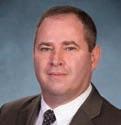
The Hartford, headquartered in Hartford, Connecticut, appointed Matthew Massaro head of sales and underwriting for its middle and large commercial businesses’ Northeast division. Massaro has been with The Hartford for over 25 years, most recently serving as regional vice president for the Connecticut and Long Island, New York offices.

Alliant Insurance Services, headquartered in Irvine, California, hired Lou Spina as senior vice president with Alliant Specialty, bolstering the company’s New York-based surety team. The surety industry
18 | INSURANCE JOURNAL | APRIL 15, 2024 INSURANCEJOURNAL.COM
Brian Lewis Emily Fink
Arshi Ahmed
Ben Von Obstfelder
Jon Farney
Michael Tipsord
Jim Romanelli
Jason Dexter
Michelle Heaton
Lou Spina
Matthew Massaro
veteran brings more than 36 years of experience.
Alliant also added Branden Neal as senior vice president on the value-based healthcare solutions team within the employee benefits group. He is also based in New York.
Midwest
Brad Miller to vice president, information technology (IT).
Miller joined Farmers Alliance in 2001 and has held various leadership positions in data and technology. He was promoted to director of IT in 2021 and continues these responsibilities.
member. While his insurance regulatory practice is national in scope, he will primarily work from the Baton Rouge and New Orleans offices.

served as U.S. support manager at TrackMan and as omni sales and operations lead at Dick’s Sporting Goods.
Alliant Insurance Services hired Frank Ross as vice president within its Alliant Americas division.

LAUNCH, headquartered in Omaha, Nebraska, named JT Seger as chief technology officer. Seger’s experience includes being a co-founder at Sequel and a principal software engineer at Maptician and iN2L+LifeLoop.

KrausAnderson Insurance (KA), in Minneapolis, hired Andrew Creary and Joe Tietema as business risk consultants, and Shannon Strom and Nick Swanson as benefits advisors.
Creary comes to KA from Kansas City-based Lockton Cos., where he served as a business and risk consultant.
Tietema previously was a commercial lines advisor for Assured Partners of Minnesota.
Strom recently served as the vice president of growth at Elevate Advisory Group, an employee benefits firm based in Plymouth, Minnesota.
Swanson founded Ezra Insurance Group, an independent health insurance agency.
Farmers Alliance Companies, headquartered in McPherson, Kansas, promoted
Westfield, headquartered in Westfield Center, Ohio, named Stuart Rosenberg to the newly created position of president of standard lines.
With two decades of experience at Westfield, Rosenberg most recently served as enterprise leader for personal insurance, chief innovation and strategy officer, and interim head of commercial insurance.
JM Wilson, headquartered in Portage, Michigan, named Eric Chalus as transportation underwriter.
Chalus joined JM Wilson in 2021 as an assistant transportation underwriter.
South Central
Dallas-based Brown & Riding appointed Bill Stratico national professional liability practice leader.

Stratico has over 35 years of industry experience. He joined Brown & Riding in 2010 as a management and professional liability broker, and most recently served as senior vice president.
McGlinchey Stafford, headquartered in New Orleans, named former Louisiana Insurance Commissioner Jim Donelon, an attorney, as a
Donelon became commissioner in 2006 and was elected to four consecutive terms, ending in January 2024. He also has represented Jefferson Parish in the Louisiana House of Representatives.
Alliant Insurance Services hired April Files as senior vice president within the Alliant Americas division. She is based in Houston.
Files comes to Alliant with more than 24 years of experience as an industry generalist, including her most recent role as senior director of commercial lines at Marsh and previous roles at Arthur J. Gallagher and Lockton Companies.
Southeast
Atlas Insurance has named Jared Hawkins and Michael Howard partners in the Sarasota, Florida-based agency.
Howard is a third-generation insurance agent at the firm.
Hawkins is a second-generation agent who specializes in construction coverage. He has been with Atlas since 2011.
West
Winston Welch joined Crest Insurance Group in its Tucson and Scottsdale, Arizona, offices.
Welch has extensive experience in management and business development, both in the United States and internationally. He previously
Ross joins Alliant with a property/casualty insurance background encompassing risk management, cyber liability, and executive liability. Before joining Alliant, he was senior vice president at USI and senior vice president at Wells Fargo.
Willy Hammond joined the Alliant’s private client division as vice president, senior loss control specialist.
Hammond has 30 years of industry experience and previously served as national director of premier accounts at The Cincinnati Insurance Companies, and as vice president, platinum accounts, risk management services at AIG, private client group.

ICW Group Insurance Companies promoted Paul Zamora to chief underwriting officer.
Zamora joined ICW Group nearly 20 years ago to oversee its workers’ compensation underwriting business. He most recently served as senior vice president of workers’ compensaton underwriting. Zamora has more than 30 years of experience in the insurance and underwriting business.
ICW Group is headquartered in San Diego, California.
APRIL 15, 2024 INSURANCE JOURNAL | 19 INSURANCEJOURNAL.COM
JT Seger
Andrew Creary
Bill Stratico
Jim Donelon
Willy Hammond
Business Moves

National
Risk Strategies, H.W. International Global specialty brokerage Risk Strategies reported it has acquired the U.S. and Canadian operating entities of global insurance holding company, H.W. International B.V.
Based in New York City, Hugh Wood Inc. (U.S.) provides commercial lines, personal lines, and group benefits with a focus on real estate, marine, ports, metals, fine art, international, and Japanese global clients.
Hugh Wood Canada Limited is based in Toronto, Ontario, and is a niche specialty broker focused on complex commercial lines placements and personal asset protection.
HWI expands Risk Strategies’ practice in the commercial marine space, including in developing insurance for global cargo transit and inventory risks, blue and brown water marine hull, liability coverage for vessel owners, and marine liabilities for those clients involved within the marine industry.
HWI also brings specialty expertise to the Risk Strategies fine art practice in a variety of collectibles, including coins and stamps, for a wide range of clients from commercial dealers to private collectors.
The Canadian retail operation adds specialty expertise in several industry and commercial and private lines coverages.
The transaction marks the end of a strategic review, and subsequent sales process, by HWI of its North American operations, which started in 2021.
TAG Financial Institutions Group acted as advisor to HWI.
Risk Strategies has more than 30 specialty practices serving commercial companies, nonprofits, public entities, and individuals. It has more than 100 offices including Boston, New York City, Chicago, Toronto, Montreal, Grand Cayman, Miami, Atlanta, Dallas, Nashville, Washington D.C., Los Angeles and San Francisco.
Dellwood Insurance Group
Michael Price and Kean Driscoll, two former executives with American International Group (AIG) have launched a nationwide excess and surplus lines (E&S) insurance holding company, Dellwood Insurance Group.
New Jersey-based Dellwood will be dedicated to property/casualty wholesale brokers with an emphasis on small and middle enterprise (SME) risks.
Dellwood is backed by RenaissanceRe, PartnerRe, Starr Insurance, and Central Insurance, along with more than $250 million in capital.
Individual investors in the entity include Dominic Addesso, David Delaney, VJ Dowling, Jim Hays, and principals from Stone Point Capital, according to the company’s launch announcement.
Driscoll will serve as president and chief underwriting officer. Driscoll’s background includes serving as CEO and president of Validus Holdings from 2012 to 2019. He spent 2019 to 2023 at AIG in New York as global chief underwriter, global head of reinsurance strategy and global property chief underwriting officer.
Price spent almost five years from 2018 to 2023 at AIG in New York in various roles with General Insurance including CEO, chief operating officer, and deputy chief underwriting officer. Prior to AIG, he spent more than nine years at Arch Insurance in senior positions in underwriting and operations. Earlier in his career, he worked at The Hartford.
Addesso will serve as Dellwood Insurance Group’s non-executive chairman. He currently serves in advisory roles with Clearview Risk Holdings, Core Specialty Insurance Holdings, BMS Re and BMS Group.
Howden Tiger Capital Markets & Advisory served as Dellwood’s financial advisor and Foley & Lardner served as Dellwood’s legal advisor.
East
Alkeme, Wharton Lyon & Lyon
California-based insurance broker
Alkeme acquired Wharton Lyon & Lyon, a retail insurance agency headquartered in Livingston, New Jersey.
Founded in 1912, Wharton Lyon & Lyon is a third-generation insurance agency providing risk management services along with property/casualty, life, health and group insurance. The firm also provides banking and mortgage insurance consulting through a separate division created in 2009
The agency has an additional office in Eatontown, New Jersey.
The executive team includes Bruce Gilson, chairman; Robert Sileno, president; Phyllis Walsh, executive vice president; and Patricia Browne, secretary.
The deal expands Alkeme’s reach on the East Coast. Since its founding in 2020, Alkeme has completed more than 40 acquisitions and currently operates out of 35 locations in 16 states.
Alkeme is ranked by Insurance Journal one of the top 40 largest independent agencies.
Alkeme was formed in 2018 when eight brokerages based throughout southern California left a cluster arrangement to create a new affiliate group. In early 2020, they merged together and found a capital
20 | INSURANCE JOURNAL | APRIL 15, 2024 INSURANCEJOURNAL.COM
partner in private equity manager GCP Capital.
Acrisure
Acrisure has formed a New England region, encompassing its businesses in Connecticut, Massachusetts, Maine, New Hampshire, Rhode Island and Vermont. Acrisure’s New England presence includes 27 office locations, with nearly 400 employees serving more than 57,000 customers.
The company also operates an office in Boston’s Back Bay, home to colleagues working in innovation, marketing and cyber services.
Paul Plunkett will serve as managing partner of the New England region. Plunkett is a Vermont native and former principal with Hickok & Boardman Insurance Group, which joined Acrisure in 2019. He has four decades of industry experience in commercial and personal insurance.
The creation of the New England region is one of the final steps in the company’s unifying all of its acquisitions and businesses under the Acrisure brand, according to Greg Williams, chairman and CEO of Acrisure. The company previously announced the formation of Southeast, Great Lakes, South and West regions.
Headquartered in Grand Rapids, Michigan, Acrisure also has locations in Europe.
Midwest
Plummer Insurance, Classic One Insurance
Plummer Insurance Inc. reported it has acquired Nebraska-based Classic One Insurance from Riverstone Bank.
Classic One Insurance will remain at its current Scottsbluff, Nebraska, location for the immediate future, but will eventually move to Plummer Insurance’s new location in Gering, Nebraska.
Plummer Insurance was established in 1984 by Steve and Helen Plummer. The agency currently has nine locations in western Nebraska and eastern Colorado and offers multiple insurance products, including home, auto, farm, life, health,
crop, bonds, business/commercial, truck, and specialty insurance, by several insurance companies.
Midwest Builders’ Casualty, Waypoint Mutual
Midwest Builders’ Casualty Mutual Co., a large, regional, specialized workers’ compensation insurance carrier, has changed its name to Waypoint Mutual.
Kansas City, Missouri-based Waypoint Mutual has served as a specialized niche workers’ compensation carrier for the last 42 years. The carrier will continue to be headquartered in Kansas City and maintain licenses in 31 states.
The name change aligns with the multi-state reach of the company and its continued expansion beyond the construction market.
Waypoint Mutual will remain a monoline workers’ compensation without changes in coverage, territory, or operational philosophy.
John Crowley, president and CEO of Midwest Builders’ Casualty, said the company will continue its commitment to exceptional service.
South Central
Higginbotham, Glenn Harris & Associates
Fort Worth, Texas-based independent insurance firm, Higginbotham, has doubled its presence in Oklahoma by adding Glenn Harris & Associates.
Glenn Harris & Associates of Oklahoma City was founded by Principal Glenn S. Harris in 1987. The firm provides customers with one-on-one service and education from dedicated teams offering the best available coverage at competitive rates.
Glenn Harris & Associates customizes solutions for each client’s needs from a range of carefully selected carriers. The agency provides all types of personal insurance coverage, such as homeowners’, auto, motorcycle, RV and renters’ insurance, and business insurance solutions, such as commercial property, umbrella, EPLI, errors and omissions, inland marine, and professional liability.
Higginbotham opened its first out-ofstate office in Oklahoma City in 2017.


APRIL 15, 2024 INSURANCE JOURNAL | 21 INSURANCEJOURNAL.COM Hard-to-place healthcare facility? We don’t hide. Find out how we can make “yes” happen. Book a call or get an instant quote. aiu-usa.com
us to o er smart,
healthcare facilities.
Our proven loss control process allows
competitive options for olderframe
News & Markets
Middle-Market Companies Post Record Gains: Chubb
By Allen Laman
Middle-market companies posted record economic growth and revenue gains in the second half of 2023, according to a recent indicator survey by Chubb.
A record 77% of companies reported performance improvement in the last six months of 2023 — the highest total in the 12-year run of Chubb’s joint survey with the National Center for the Middle Market at Ohio State University’s Fisher College of Business. The second half of 2023 marked the fifth consecutive six-month stretch that showed all survey respondents reporting profit increases of more than 12%. This came despite the backdrop of inflationary pressures, cybersecurity threats, natural catastrophes and insurance coverage gaps. Looking ahead, however, middle-market companies anticipate a one-third reduction in revenue growth in 2024.
Favorable momentum surrounding the segment’s growth and investment is not a new phenomenon.
“There are some themes that we’ve picked out, and the one that’s the most prominent, I would say, common in the middle market is [that] this sector tends to reside in this intersection between resilience and [a] good runway,” explained Ben Rockwell, division president of Chubb Middle Market.
Ninety percent of middle-market firms are privately held, Rockwell said, generally allowing them to think about investments and earnings on a longer-term basis than publicly traded companies that operate more on a quarter-to-quarter basis. And, unlike small businesses, those in the middle market companies have scalability.
“You’ve got a third of the private sector GDP in employment really sitting in this middle market space,” Rockwell said. “So, there’s a real scale there where these middle-market firms can make a real economic difference. And, interestingly, a lot of them have multi-national exposures, but not all of them do.”
This means the sector is less exposed to
the global marketplace and less likely to be jolted by geopolitical issues like wars and supply chain problems. The ability to invest in new technologies and innovation at a faster pace also sets the segment apart.
According to the report, employment growth slowed for all sizes of middle-market companies in the second half of 2023, with large companies breaking their uptrend for the first time since 2020. Middle-market companies overall expect employment growth to cool further.
Focus Points
According to the report, middle-market companies do recognize areas where they’re underinsured.
Only 36% of companies reported their multinational insurance needs are covered, and 40% said they are adequately covered for pollution liability. Evolving cyber risks also present a challenge for middle-market companies, which are known to invest and utilize new technology.
“It’s interesting, we saw it in the survey; there are still some coverage gaps, and cyber is actually one of them,” Rockwell said. “We saw in the survey, 47% of the clients said that they were adequately covered. But 52% indicated they needed more or additional cyber coverage.”
He later explained that these firms tend to operate lean. Rockwell underscored the importance of independent agents and

brokers working with clients to not only identify exposures but, more importantly, proactively plan to mitigate risks.
“And that’s not just the insurance programs you put together,” Rockwell said. “But these are really the risk management practices that they help enable in these firms. And I think that, for me, is a really big takeaway here.”
Climate change is on the middle market’s radar. It factors into where leaders choose to locate their businesses, Rockwell said, and it also plays a role in deciding how assets will be protected. Stability in the form of physical property resilience and business continuity planning are on their minds.
“When you see climate and you see catastrophic exposures and perils changing and evolving the way that we do, these firms are thinking about that,” Rockwell said.
Inflation remains a headwind for middle-market businesses, as do recession concerns and workforce challenges such as hiring and retaining talent. As inflation persists, Rockwell explained that Chubb’s research shows middle-market firms continue to value adequate limits and coverage because of the cost of replacing materials and wages.
The report notes that nearly threefourths of companies will consider increasing their insurance coverage in response to higher replacement costs of their assets due to inflation.
“When we talk about inflation and the pressure on costs, really where we’ve seen it is in two main areas,” Rockwell said. “We’ve seen firms continuing to evaluate the limits that they’re carrying on their programs.”
He later added: “The other area is we’re definitely seeing clients take more risk in the form of higher deductibles. So, as you feel that inflation pressure [and] cost pressure, as replacement goods are more expensive, we are seeing clients take higher deductibles as a way to kind of stabilize and manage their pricing as they work through their programs.”
22 | INSURANCE JOURNAL | APRIL 15, 2024 INSURANCEJOURNAL.COM
Closer Look: Directors & Officers
continued from page 17
investigation, she added.
Staying Prepared
Indeed, Rizzo said on The Insuring Cyber Podcast that the best way to avoid these extra expenses is to be prepared, engage experts, and examine the company’s suite of products to ensure there aren’t any coverage gaps. “Hopefully, this will improve the overall cyber posture and risk management practices of our clients,” he said.

Panelists at PLUS D&O echoed these thoughts.
“I’ll say, in practice, I kind of didn’t expect [the rules] to change much,” Littman said. “But I have observed — at
least among my clients when they have an incident, or even when they don’t have an incident but a vendor that they work with has an incident or someone that they provide services to has an incident — I’ve seen an uptick in the internal process around assessing materiality and making sure that, first of all, they’re approaching it from the right mindset because assessing materiality is difficult in these circumstances a lot of the time, but also that they’re documenting it internally (and) appropriately.”
While determining materiality is proving to be a challenge, she said a silver lining is
that these questions are making insurers and insureds think more carefully about the cyber procedures and coverage they have in place to protect themselves.
“[The SEC does] want you to make that determination without unreasonable delay. I don’t think anyone wants to be the poster child for what that means. So I recommend trying hard to figure out if something is material as quickly as you can and determining whether or not to make a disclosure,” she said. “It does make companies a little more introspective and make sure that they have adequate programs in place so that if they’re hit with a cyber incident, they have internal policies to assess the incident, determine the materiality, and assess whether or not they need to make a disclosure.”
Blosfield is the deputy editor of Carrier Management, a sister publication to Insurance Journal.
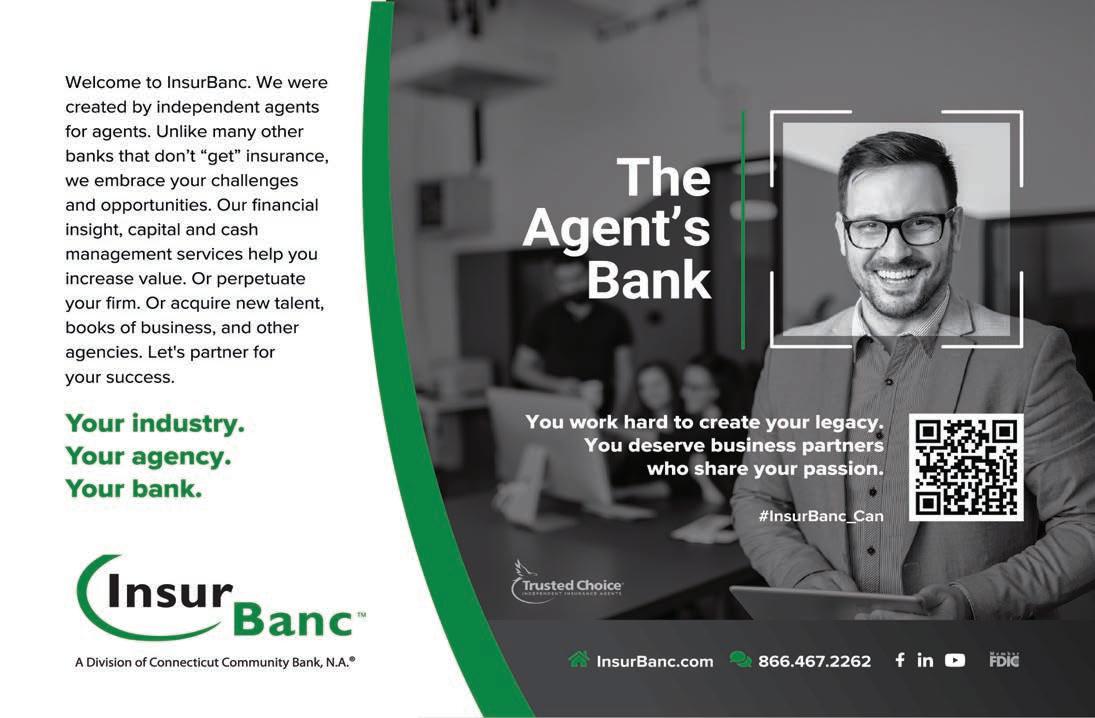
APRIL 15, 2024 INSURANCE JOURNAL | 23 INSURANCEJOURNAL.COM
Spotlight: Directors & Officers
D&O Risks to Consider When Exploring the New Frontier of Gen AI

Is the world being overtaken by robots? While the answer to that question is clearly “no” — or at least, “not yet” — it seems that the focus of nearly every industry and business media outlet is artificial intelligence. This includes the insurance industry. Everyday life is
 By Matthew Ferguson
By Matthew Ferguson

ingrained with AI, such as voice assistants, stock portfolios, news, and advertisements.
These more traditional forms of AI have seamlessly melded into the background of society. The future sits with newer and more advanced forms of generative AI, such as ChatGPT, which can create original content to transform the business world. It can also create new risks along with it.
A February 2024 report from management consultant McKinsey titled, “Beyond the hype: Capturing the potential of AI and gen AI in tech, media and telecom,” suggests that AI will add in excess of $2 trillion to the economy annually.
Accordingly, businesses are in a race to integrate AI into their processes. The risks that arise from the race to automation and machine intelligence will no doubt impact insureds in nearly every industry and sector.
How and Where AI Is Being Used
Most companies are seemingly using AI in some capacity and those numbers are probably understated with each passing day. Businesses are using generative AI to gather, analyze, and synthesize large sets of data that can cut down decision making time and actively assist in corporate
decision making and strategy. Some industries naturally appear to be adopting AI at a higher rate than others. These early adopters may experience higher levels of risk in the near term. For example, consumer goods and retail, tech, financial services, professional services and healthcare each experienced nearly double digit growth in the use of AI in the last several years, according to an August 2023 report by software company Magnifi titled, “Which Industries Are Adopting AI the Most and Least?”
Some of the uses for AI include analyzing data to set prices and manage inventory,
24 | INSURANCE JOURNAL | APRIL 15, 2024 INSURANCEJOURNAL.COM
and James Gammell
monitoring compliance and cybersecurity risk, analyzing submissions including patient data and claims, credit scoring, and even investment decisions. The common theme throughout all industries appears to be analyzing the specific data sets held by companies to produce faster or more accurate outputs to inform strategy and decision making.
This reliance on data analysis leads to potential risks posed by the use of AI. What happens if the data inputs are inaccurate or low quality? Whom does the data belong to and how is it being used? Is data being kept safe? Each of these questions leads to unique risks that companies and individuals will look to their insurers to cover.
The Insurance Risks Posed by AI
One of the biggest likely risks to insurers currently regarding AI is the unknown nature of potential liability. AI’s continued development and improvement and its ever-increasing uses make the extent and sources of liability unclear. With growing interest in this topic, and some risks coming to fruition, the future threats are seemingly becoming clearer for insurers. There is naturally some educated guess work.
For now, significant risk sits with AI developers, in addition to those developing AI systems and products. As such, we can expect more direct actions against AI developers and their directors and officers arising from how the AI products they have created are being used. These lawsuits are likely to take the form of intellectual property and privacy related lawsuits.
For example, generative AI
developers have been faced with copyright and trademark lawsuits arising from data used to train AI models, outlined in law firm K&L Gates’ September 2023 report titled, “Recent Trends in Generative Artificial Intelligence Litigation in the United States.”
The report points to one of the most well-known cases alleging copyright infringement with the use of generative AI: Andersen v. Stability AI Ltd.5. In this case, plaintiffs Sarah Andersen, Kelly McKernan, and Karla Ortiz, on behalf of a putative class of artists, alleged that Stability AI Ltd. and Stability AI Inc. and others scraped billions of copyrighted images from online sources without permission to train their image-generating models to produce seemingly new images without attribution to the original artists.
In February 2023, a trademark lawsuit arose against Stability AI with similar claims. In Getty Images (US), Inc. v. Stability AI, Inc., media company Getty Images Inc. filed suit against Stability AI asserting claims of copyright and trademark infringement. The complaint also claims that Stability AI scraped Getty’s website for images and data used in the training of its image-generating model, Stable Diffusion, with the aim of establishing a competing product or service, according to K&L Gates’ report.
Training AI models can be done with a variety of sources including text, images, or music. Training AI potentially involves types of work protected by copyright laws. A high-profile example is The New York Times lawsuit against OpenAI and Microsoft,
in which The New York Times Co. sued Microsoft Corp. and OpenAI Inc. for the use of content to help develop artificial intelligence services. Privacy lawsuits are being brought based on the same premise, that AI developers are using private information to train their AI models.
‘AI’s continued development and improvement and its ever-increasing uses make the extent and sources of liability unclear.’
Other lawsuits include data privacy from unauthorized facial scanning and libel lawsuits arising from AI hallucinations, a phenomenon in which generative AI creates false information and presents it as true. In some cases, these situations include convincing explanations of where the false information comes from.
These direct risks are expected to expand. More traditional economic pressures may arise, as well. As more AI developers join the frenzy, it is possible that those participants may come under great financial pressures to chase market leaders. Those late entrants and their backers may face multiple risks in a more crowded space.
The new frontier of risks appears to be against companies using AI in their own business. The main foreseeable danger is related to disclosures. Disclosure risks can take two contrary forms — either a lack of disclosure or overselling AI usage, now coined as AI-washing.
Likened to green-washing,
which is when a false impression or misleading information is given about how a company’s products are environmentally sound, AI-washing involves companies touting their use of AI to attract certain investors or attention. The reality may be that the company only uses AI minimally or not at all.
For example, imagine a financial services company advertising its extensive use of AI in its investment portfolio. This sounds like the company is using AI to inform investment decisions. Now suppose the company is actually using AI in investor communications or administrative tasks. A resulting claim could plausibly take the form of a securities fraud case.
In fact, securities class actions and regulatory investigations often stem from lack of or allegedly inaccurate disclosure of information to shareholders. AI-based securities class action lawsuits against companies and their D&Os for failing to fully disclose how they are using AI are likely on the horizon.
Another avenue of potential risk is based on breaches of fiduciary duty and lack of oversight by D&Os. As regulatory and legislative interest in AI increases, the burden on D&Os to understand new regulations and comply with them also increases. Regulatory investigations, and eventually lawsuits, could arise from the failure to comply with certain, and perhaps yet unknown, regulatory requirements. The risk of this increases where companies are racing to implement AI programs for a competitive advantage or perhaps to make up for lost ground. If and when continued on page 26
APRIL 15, 2024 INSURANCE JOURNAL | 25 INSURANCEJOURNAL.COM
Spotlight: Directors & Officers
continued from page 25
companies and their D&Os do rely on AI for processes or decision making, there is a risk AI will get it wrong or produce inequitable, discriminatory, or even absurd results. This is all dependent on the underlying programming and human input.
The issues are compounded by the reality that the AI will repeatedly make the same mistakes over time, leading to larger claims if problems are not identified quickly. Failing to adequately disclose or promptly address those issues can also lead to management liability challenges.
Other categories of risks can include employment-related risks related to hiring decisions and bias that can inadvertently be built into AI models based on historical data. Professional liability cases including lawyers, financial institutions, accountants, or healthcare providers may similarly face risks from relying on AI to cite cases, make investment decisions, or decide a treatment plan either without checking the veracity of the results produced by AI against human knowledge or from being fooled by AI hallucinations.
Examples of AI Risks
Many of the risks posed to insurers and their insureds are unknown and based on educated guesses.
Some of the examples mentioned, such as The New York Times lawsuit against OpenAI and Microsoft, are examples of common lawsuits that D&O and management liability insurers may already see. However, these examples happen to involve AI companies.
Two AI based securities class actions have also recently been filed.
The first was filed in February 2024 against Innodata, a data engineering company that assists clients with the use, management and distribution of their digital data, along with its directors and officers. The lawsuit alleges that the defendants made false and misleading statements about the extent of the company’s use of and its investments in AI. The lawsuit also alleges that rather than being powered by innovative and proprietary AI, the company was actually utilizing low wage offshore workers.
The second class action lawsuit was filed in March 2024
against Evolv Technologies Holdings Inc., a weapons detecting security screening company. Evolv allegedly held itself out as a leader in AI weapon detection and promoted its flagship product as being able to detect firearms, explosives and knives. The lawsuit alleges that Evolv overstated its use of AI or the effectiveness of the security results obtained of the AI. Specifically, Evolv allegedly hid test results showing failures to detect weapons in screening. The lawsuit also alleges that both the FTC and SEC had begun investigations into the company. These types of disclosure-based lawsuits involving AI companies may arise with increased frequency.
Finally, increased regulatory scrutiny is already developing into investigations and actions. This momentum will most likely develop into enforcement litigation concerning representations and disclosures concerning AI.
In March 2024, the SEC announced two settled charges against two investment advisers, Delphia (USA) Inc. and Global Predictions Inc. The two charges asserted that the advisers made false and misleading statements about
their use of AI, both marketing greater use of AI than was actually in place.
AI is becoming more of a risk to D&O insurers even though its current form of disclosure related risks will likely resemble many of the other risks those insurers face in other industries. AI is rapidly changing the business landscape as its growth and reach appear potentially staggering.
Corporate disclosure and risk managers are catching up to these changes. It is likely there will be a period of change and recalibration during this time and insurers will need to consider these rapidly evolving dynamics.
Ferguson is a partner in the New York office of Kennedys where he focuses on domestic and international insurance matters, where he primarily focuses on directors and officers (D&O) liability, professional liability and financial institutions liability
Gammell is an associate at Kennedys and focuses domestic and international insurance coverage disputes including those arising under directors’ and officers’ (D&O) liability, professional liability, financial institutions liability and employment practices (EPL) liability.

26 | INSURANCE JOURNAL | APRIL 15, 2024 INSURANCEJOURNAL.COM


We Seal the Deal Professional Liability: D&O, EPLI, Misc E&O, Medical Professions, Legal Malpractice, Accountants, Media Liability, A&E, Technology, Cyber MonarchExcess.com Burbank 818-249-0100 / Fresno 559-226-0200 / Rancho Mirage 760-779-5555 / San Diego 619-521-2170 / Simi Valley 805-577-6800 San Marcos 760-891-2811 / Arizona 877-406-8026 / Hawaii 818-425-9847 / Miami, FL 305-569-6734 / Lic. #0L09546
News & Markets
Cryptocurrency Asset Platform Settles with Oregon over Violations
The Oregon Division of Financial Regulation reached a settlement agreement in principle with a cryptocurrency asset platform for violating state securities regulations.
The group of affiliated companies known as Abra – Plutus Financial Holdings Inc., Plutus Financial Inc., Plutus Lending LLC and Abra Boost LLC – offered and sold interest-bearing cryptocurrency depository products referred to as Abra Boost and Abra Earn.
The settlement requires the companies to notify all Oregon consumers with open accounts containing crypto assets with the companies that they are winding down U.S. operations and to encourage consumers to move any remaining crypto assets from the platform.
Consumers have at least seven days from the date they receive notice to remove their assets from the Abra platform. Assets remaining after that date with a value of $10 or more will be converted to fiat and a check or other instrument will be sent directly to the consumer’s last known address.

In Oregon, 167 residents still have cryptocurrencies on the Abra platform valued at about $32,387.14, according to the division.
The companies – controlled by William “Bill” Barhydt, who is also a party to the settlement – reportedly offered Abra Earn to all U.S. clients and Abra Boost to accredited U.S. clients. Investors in both programs earned interest by depositing digital assets with Abra and authorizing

Oregon OSHA Fines Bend Contractor $103K for Repeated Fall Protection Violations
The Oregon Occupational Safety and Health Division fined a Bend construction company $103,438 for repeatedly violating a requirement to
provide protective systems to safeguard workers from fall hazards.
The division cited Sky Ridge Construction LLC following an inspection
Abra to lend client assets to institutional borrowers, according to the department.
As part of the settlement, Abra and Barhydt will enter a consent order with DFR requiring that they cease and desist from offering or selling unregistered securities in Oregon and ordering them to pay an administrative penalty, which will be suspended if they comply with the process to return all assets owned by Oregon consumers before April 25.
that focused on a job site where work was being done on new houses. The inspection was conducted under Oregon OSHA’s prevention-based emphasis program addressing fall hazards in all industries.
The inspection reportedly found multiple employees working on a roof without fall protection in which they were exposed to a potential fall of 18 feet to the ground. Employers are required to ensure that fall protection systems are provided, installed, and implemented where employees are exposed to a hazard of falling 6 feet or more to a lower level.
During the inspection, the company corrected the violation identified by Oregon OSHA. It was the third time since January 2022 that Sky Ridge Construction violated fall protection requirements. Because of the repeat offenses, the penalty for the violation was multiplied, with Oregon OSHA imposing a $103,438 penalty.
Employers have 30 calendar days after receiving a citation to file an appeal.
W2 | INSURANCE JOURNAL | APRIL 15, 2024 INSURANCEJOURNAL.COM

News & Markets

Former California Insurance Agent Found Guilty of Taking $1.2M from Victims
Former licensed insurance agent
Brett E. Lovett, 53, of Camarillo, California, was found guilty of 29 felony counts including grand theft, elder abuse, money laundering, and burglary after a 15-month California Department of Insurance investigation reportedly found he defrauded at least nine victims, including senior citizens, of nearly $1.2 million.
Lovett was arrested in 2017 after the department’s investigation revealed that between 2011 and 2016, he defrauded at least nine victims. Several of his victims were reportedly senior citizens whom he met and befriended at a place of worship in Carpinteria. Other victims sought
legal advice from Lovett through his legal aid information business.
Victims entrusted Lovett with their money for proposed investments that never existed, or for financial management purposes. Lovett then misappropriated the money for his own personal use and to repay some of his victims.
In 2007, doing business as Northwest Asset Fund, Lovett was ordered to pay more than $675,900 in restitution, fines and sanctions by the U.S. Commodity Futures Trading Commission. Lovett never paid the fines or restitution. The CFTC entered a permanent injunction
against Lovett, who never registered with the CFTC. Between October 2002 and August 2005, Lovett solicited money from individuals, purportedly to trade commodity futures, through false promises of high returns from a low-risk investment.
Lovett’s license to transact insurance expired in May 2000. He was not acting as an insurance agent during this time, but he was reportedly giving financial advice which he was not licensed to give.
Lovett is scheduled to return to court for sentencing on May 9. The Santa Barbara County District Attorney’s office is prosecuting the case.
California Beefing up Recruitment for Inspectors to Better Enforce Workplace Laws
California’s Department of Industrial Relations is beefing up a statewide effort to recruit inspectors and investigators throughout California to more thoroughly enforce labor and workplace laws.
The DIR is hiring enforcement staff for
Cal/OSHA and the Labor Commissioner’s Office under a statewide campaign to that features a revamped website showcasing potential careers in the offices.
CalOSHA inspectors investigate construction sites, healthcare facilities, manufacturing, agricultural operations, including
interviewing employees, analyzing hazards, and enforcing safety conditions. LCO’s investigators work to ensure workers are paid by resolving wage claims and investigating retaliation complaints.
The DIR is housed within the state’s Labor & Workforce Development Agency.
W4 | INSURANCE JOURNAL | APRIL 15, 2024 INSURANCEJOURNAL.COM
My New Markets
Fleet Trucking Program
Market Detail: Futuristic Underwriters Inc. offers a fleet trucking program that includes auto liability, auto physical damage, cargo, and general liability. This program is focused on fleets that use modern telematics technology in their trucks. Our experienced underwriters and technology professionals look forward to working with transportation agents and their insureds to provide competitive coverage and reduce accidents. Has pen; appointment required.
Available Limits: Not disclosed.
Carrier: Admitted and non-admitted.
States: Available in all states plus District of Columbia.
Contact: Michael Gramm; michael. gramm@futuristicunderwriters.com; 888-615-6767.
SBA Surety Bond Guarantee Program
Market Detail: Old Republic Surety offers the U.S. Small Business Administration’s Surety Bond Guarantee (SBG) program, which helps small and emerging contractors who lack experience and financial strength to obtain bonds through regular commercial channels. The SBA guarantees bid bonds and payment and performance bonds issued by select surety companies, allowing contractors who otherwise would not meet their minimum standards to obtain bonds. Old Republic Surety partners with the SBA as a “Prior Approval” surety, providing bonds up to $10 million for federal projects and up to $6.5 million for any public or private contract or subcontract project. The SBG program is a good fit for: start-ups and firms in business less than 3 years; firms with limited financial resources or job history; firms wishing to increase current bond limits; firms desiring to replace/ reduce collateral; subcontractors interested in establishing capacity. Business eligibility: For construction, service and supply firms — $8 million revenue limit for some services such as landscaping; $16.5 million limit for most specialty trades; and $39.5 million limit for heavy construction; ownership variables, good character and reasonable expectation of completion;
contractor was unable to obtain bond elsewhere with reasonable terms. The type of financial information required is based on the size and style for the project. For those seeking smaller bonds for certain kinds of projects, the SBA QuickApp program offers easy qualification without providing any financial statements.
Available Limits: Up to $10 million for federal projects and up to $6.5 million for any public or private contract or subcontract project.
Carrier: Not disclosed.
States: Available in all states plus District of Columbia.
Contact: Old Republic Surety; MidwestCommercial@orsurety.com; 800-247-2312.
Difficult to Place Event Insurance
Market Detail: InsuranceHelper.com offers a general liability event insurance program with broad coverage and low prices. Highlights: Host liquor coverage included and retail liquor coverage available; over 400 event classification codes; cover events up to 5,000 attendance; instant coverage; waiver of subrogation / primary wording available; hired and non-owned auto coverage available; free unlimited additional insureds; no coverage location limitation. $255 maximum premium; $40 minimum premium; has pen; appointment required.

through its extensive network of subject matter experts. Clients can select what elements to insource and what elements to outsource to align with the client’s requirements for revenue recognition, customer experience, profit participation, and other critical items. Service contract reimbursement insurance and contractual liability insurance policies are used to support optional service contract programs and limited warranty programs.
Available Limits: Not disclosed.
Carrier: Not disclosed.
States: Available in most states plus District of Columbia. Not available in Hawaii.
Contact: Mike Frosch; mike@meramecsecure.com; 800-466-7617.
Occupational Accident — Rate Your Own
Market Detail: For your occupational accident clients, Guardian Insurance Wholesalers Inc. provides a rating spreadsheet that allows you to quickly quote any size account. Passenger accident is available for $120 annual premium per passenger. (Only available with the purchase of OccAcc.) Contingent liability coverage available for $120 premium per driver. (Only available with the purchase of OccAcc.) Has pen; appointment required.
Available Limits: $1 million CSL/$2 million aggregate limit. This includes coverage for non-occupational accidents.
Carrier: Not disclosed.
Available Limits: Not disclosed.
Carrier: Several to choose from; non-admitted; rated A or better by AM Best.
States: Available in all states plus District of Columbia.
Contact: Marc Engellenner; brokers@ insurancehelper.com; 530-648-1100.
Service Contracts
Market Detail: Meramec Secure programs offer full support for companies seeking to form a new service contract provider. Meramec Secure directly and indirectly supports the regulatory, compliance, underwriting, technology, service network, claims administration, insurance carrier, reinsurance, and other aspects
States: Available in most states plus District of Columbia. Not available in Alaska, Hawaii and New York.
Contact: David Huff; dlhuff@guardian-ins.com; 800-325-9059.
APRIL 15, 2024 INSURANCE JOURNAL | 27 INSURANCEJOURNAL.COM
This section brought to you by Insurance Journal's sister website: www.mynewmarkets.com Need a Market? Find It. FAST
Special Report: Young Agents Survey
 By Andrea Wells
By Andrea Wells
Young Agents' Biggest Challenges
What’s so great about a career in an insurance agency?
Lots, actually. Like opportunity, flexibility, training, challenges, good pay, helping others, and job security.
What’s more, it’s an opportunity available to those who have a college degree or who never went to college or dropped out. For working parents seeking
flexibility or anyone seeking a career change. For those who want a little or a lot of action and responsibility.
Also, the people who work in insurance agencies, think it’s great. Insurance Journal asked them in its annual survey of young agents. Most young agents (80.8%) told Insurance Journal they would recommend being an insurance agent to another young person.
Young agents are typically an
28 | INSURANCE JOURNAL | APRIL 15, 2024 INSURANCEJOURNAL.COM
Finding new markets Finding new employees Finding new customers Finding new motivation Finding new efficiencies 35.0% 43.7% 35.0% 31.0% 34.0%
optimistic crowd and even after the past few years of what many say is the longest hard market in insurance history that optimism is still quite high.
When it comes to their career choice, 45.3% of young agents responding to this year’s survey reported they feel “very optimistic” on the outlook of their career (down slightly from 53.9% of in the 2023 survey).
Young agents also feel pretty good about the condition of today’s U.S. economy. In fact, their outlook on economic conditions in 2024 is much more positive than it was in 2023, the survey found.
Half (50.0%) of young agents felt “very optimistic” about the outlook of the U.S. economy in 2024 while another 18% reported feeling “optimistic.” That’s considerably higher than the 4.1% young agents responding to the 2023 survey who said their view on the U.S. economy was “very optimistic” with only another 11.9% reporting “optimistic” feelings about the economy last year. Slightly more than a quarter of young agents (26.5%) do not feel optimistic about 2024’s economy at all.
Young agents felt less positive about the future of the agency system this year. According to the survey, only 28.7% of young agents felt “very optimistic” about the future of the agency system compared to 38.7% in the 2023 survey.
Despite their concerns, more than half (55.2%) of young agents reported feeling “very optimistic” that their income will be greater in 2024 than in 2023 with another quarter-plus (28.4%) feeling “optimistic” that their income will rise this year over last year’s.
The annual Insurance Journal
survey polls the opinions and views of independent agents 40 years old and younger. More than 200 young agents responded to this year’s online survey during March.
What do young agents say about their careers in insurance?
Here, Insurance Journal shines the spotlight on a few including a college dropout who overcame the insurance stigma and is glad he did, a “crazy” stay-at-home “gamer” who is thrilled to go to his office every day, a working mom who switched from banking and can’t imagine a better deal for women, an owner of a family agency who has become an advocate for the industry, and a disillusioned accountant and commercial real estate developer who became “captivated” by captive insurance.
‘Be Patient’
Brock Elliott, chair of the Big I’s national young agents committee, is no stranger to the world of insurance. Elliott, branch manager/agency relations, at Kansas based Elliott Group, is a third-generation insurance agency owner.
Established in 1974 by Brock’s grandfather, Gene Elliott, the agency now operates in six locations in the state with some 50 employees.
Brock wasn’t sure about joining the family business, but he wasn’t sure about continuing college, either. After a couple of years, he returned home and reconsidered trying out the family business in 2012.
“I knew that I didn’t want to go to school anymore, and I didn’t want to spend any more money on school, so I figured that I would move back home and try out the insurance busicontinued on page 30
Profile of Young Agents
Older Side of Young
59.1% are 31 to 40 years old.
40.9% are 30 and under.
Career Choice
83.7% consider insurance to be a permanent career choice;
12.8% are unsure.
80.8% would recommend career choice to another young person — but
11.6% are not sure they would while
7.6% wouldn’t recommend being an agent.
Experience
20.2% have less than three years in insurance;
28.1% have three to five years;
29.5% have six to 10 years;
13.8% have 11 to 15 years;
8.0% have more than 15 years.
Education
59.5% have a college degree; but 24.0% completed only high school
7.5% have a master’s, doctorate or other advanced degree;
51.5% have completed or are working on an insurance designation.
70.0% have an insurance agent mentor.
Family Affairs
65.4% work in family-owned agencies.
30.1% are members of the family that owns the agency.
Size
26.9% work for agencies generating $5 million or less in P/C premium.
33.3% work for agencies generating $6 million to $25 million in P/C premium.
31.8% work for agencies generating more than $26 million.
79.3% are privately held independent agencies.
11.8% are private-equity backed.
8.9% are publicly-owned firms.
Employment Status
88.1% are independent agents;
10.5% presently are sole owners of an agency;
13.4% share ownership with a partner(s).
Ownership Dreams
76.1% do not presently own an agency. Of these,
49.6% would like to own someday and
28.2% of those feel very confident ownership dreams will come true — but
35.9% don’t believe it will happen.
Book of Business
64.0% target mostly commercial lines.
36.0% target mostly personal lines.
Gender ID
Female
Describe their political affiliation as Republican;
Democrat;
Independent;
Libertarian;
Did not wish to say.
Ethnic Background
White/Caucasian
Hispanic/Latino
Black
Asian
Native American
Other or did not wish to say
What Young Agents Do 54.3% attend local business or community meetings; 50.8% volunteer in the community; 13.7%
APRIL 15, 2024 INSURANCE JOURNAL | 29 INSURANCEJOURNAL.COM
63.9%
36.1%
42.6%
14.4%
22.8%
5.0%
15.4%
Male
0.5%
8.0%
85.1%
6.0%
2.5%
1.5%
get involved in local politics; 58.4% use Facebook; 71.6% use LinkedIn; 23.4% use X; 34.0% Generative AI (ChatGPT, Gemini, etc.); 8.6% write a blog; 59.4% utilize insurance coverage or other checklists; 71.6% take insurance courses online.
Special Report: Young Agents Survey
continued from page 29 ness for a while,” Brock said. He admits he had no real intentions of sticking to insurance long term but quickly realized that insurance is a “pretty fantastic industry to be in.”
Brock says the insurance industry is a great place for young people, even those who may not pursue a college degree. What’s most important, in his view, is experience.
College is not necessary to succeed as an agent, but experience is, he said. “In the insurance industry, particularly
if you’re in sales, your sales base is plus or minus seven years of your age and when you start young, the pool of people that you can sell to are your friends,” he said. “Unfortunately, when you’re 21, your friends are not necessarily the best clients.”
Brock also admits there continues to be some stigma with youth when in sales. “There’s some truth to that. It’s hard for a 21-year-old, 22-year-old, to have a very serious conversation with a seasoned business owner who’s in their fifties or sixties,” he added. “So, while the learn-
ing piece of it is not necessarily important, the diploma, I think life experience is a huge part.”
The industry could attract younger talent if the industry did a better job explaining what agents actually do, day in and day out, Brock says.
“We’ve talked about making insurance sexy but that’s not necessary,” he said. “It doesn’t have to be … there are people that grow up wanting to be financial advisors, CPAs,” he said. Why not insurance?
Independent agencies are not just the mom-and-pop shops
on Main Street, or the images consumers often see on Geico or Progressive commercials, he added. They can be employers of all sizes with lots of opportunities for growth. “I just don’t think that we’re looked at on that same professional level.”
For young agents beginning their career in the industry, Brock advises them to be patient.
“Being patient is key,” he said. “It takes a year before you have a real rudimentary understanding of what you’re selling, the actual product that
Believes 2024 Income Will Be Greater Than 2023
30 | INSURANCE JOURNAL | APRIL 15, 2024 INSURANCEJOURNAL.COM Very Optimistic Optimistic Cautious Not Optimistic 61.7% 24.9% 11.0% 2.4% Young Agents’ Outlook on Keeping Current Job Very Optimistic Optimistic Cautious Not Optimistic 20.0% 45.5% 10.0% 24.5% Independent Agents’ Ability to Grow Commercial Lines Market Share Very Optimistic Optimistic Cautious Not Optimistic 31.0% 15.5% 40.5% Agency’s Ability to Attract Quality Talent Very Optimistic Optimistic Cautious Not Optimistic 19.5% 51.5% 20.5% 8.5% Independent Agency Channel’s Ability to Advance in Technology Use Very Optimistic Optimistic Cautious Not Optimistic 28.9% 50.3% 16.9% Independent Agents’ Ability to Grow Personal Lines Market Share Very Optimistic Optimistic Cautious Not Optimistic 28.7% 24.0% 5.5% Outlook on the Future of the Independent Agency System 41.8% Very Optimistic Optimistic Cautious Not Optimistic 45.3% 35.3% 14.4% 5.0% Young Agents’ Outlook on Their Career Very Optimistic Optimistic Cautious Not Optimistic 26.5% 50.0% 18.0% Outlook on U.S. Economy in 2024 5.5% Very Optimistic Optimistic Cautious Not Optimistic 55.2% 28.4% 11.0% 5.4%
13.0% More in 2023 than 2022 Less in 2023 than 2022 About the same Other 79.0% 10.5% 1.7% Total Compensation in 2024 vs. 2023 Acquired or bought a family agency Acquired or bought a non-family agency Opened a start-up agency Turned my captive agency into an independent agency ESOP (employee stock ownership plan) Other 20.0% 28.9% 6.7% 37.8% How Young Agents Became an Owner 2.2% 4.4% 3.9% 8.8% Provide more opportunities Provide fewer opportunities Doesn’t matter N/A 32.5% 12.8% Opportunities in Family Owned Agencies 37.4% 17.3%
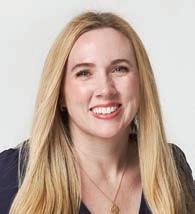
What Young Agents Think
As a younger agent, I have to work harder to gain the confidence of clients.
I fear that my career will be hurt by a merger or sale of my agency.
I wish I could specialize more than I am now permitted to do.
you’re selling,” he said. “Then it takes even longer to understand that you’re not just selling a product, but you’re selling risk management, and peace of mind,” he said. “It takes the time to learn the business and it takes time to get good at it,” he said. “But if you keep doing the right things, people will come.”
‘Don’t Stay Stagnant’
For 26-year-old Myils Rodrigue, personal lines account manager at Kaplansky Insurance Agencies in Fairhaven, Massachusetts, going to college didn’t seem like the right path. He began doing inventory work with his father, working as an inventory specialist for supermarkets. In addition, he worked for himself fixing computers and as a social media manager.
Then he decided to try an internship at Kaplansky in September 2020, a Top 100 agency where his mother works continued on page 32
Young Agent Opinions on Current Employer
APRIL 15, 2024 INSURANCE JOURNAL | 31 INSURANCEJOURNAL.COM
Basically Basically True False
73.4% 18.2%
31.0% 50.3%
30.1% 57.6% I have one or more
of
75.7% 16.8% Much of my production supports older producers in the agency. 34.7% 53.5% During my career, I have worked for more than one agency. 41.1% 57.9% While in my present position, I have been offered a job with another agency. 67.5% 26.6% Success in this business is mostly about building relationships. 90.2% 4 .4% Efficiency and effectiveness are more important than relationships to succeed in this business. 34.2% 54 .0% I propose new ideas but our firm rarely seems to get to them. 25.3% 58.4% The agency ranks could use more women and minorities. 29.9% 35.3% I
or
51.5% 40.6% I wish my agency would expand into new markets. 25.6% 51.2% I think my compensation is fair. 65.0% 27.6% I think my agency’s management is fair. 75.4% 14.3% I believe advancement is based on relationships more than performance. 31.0% 47.8% I would like to increase the time I spend on sales versus servicing or administrative tasks. 63.6% 2 3.2% The industry has been too slow to adopt new technology. 58.1% 28.1% In 25 years, the independent agency system will be stronger than it is now. 47.8% 28.1%
areas
specialization.
have already completed or am working to complete a CPCU, CIC, ARM
other insurance designation program.
Excellent Good Fair Poor Outlook for the future of my agency 52.2% 41.3% 4.4% 2.2% Access to quality markets 28.3% 54.4% 13.0% 4.4% Relationships with carriers 43.5% 45.7% 8.7% 2.2% Agency’s culture 45.7% 43.5% 8.7% 2.2% Use of technology 28.3% 47.8% 23.9% 0.0% Use of social media to market/brand agency 23.9% 47.8% 19.6% 8.7% Employee relationships 50.0% 41.3% 8.7% 0.0% Recruiting 10.9% 45.7% 34.8% 8.7% Compensation and benefits 39.1% 54.4% 6.5% 0.0%
Kelsey Swingle Robertson
Special Report: Young Agents Survey
continued from page 31
as a corporate manager.
After a short trial period, Rodrigue was offered a fulltime position as a personal lines account manager. Since then, he’s grown to love his newfound career. “Honestly, I really like the company I work for, who I work with, and the office setting. This is my first office type of job.”
In the past few years, he’s learned the ins-and-outs of personal lines and is on his way to learning commercial lines. “I’ve been doing really good since starting out, and I’m actually starting commercial lines in just the next few months,” he said. “I’ll be taking classes starting in April and am really excited to get that started.”
Even though he didn’t pursue a college degree, Rodrigue hopes to earn as many professional designations and certifications in the industry as he can. “I want to do as much as I possibly can,” he said. “First, they want to get me to get into commercial lines, and then after that I’m going to be really focused on earning designations,” he said.
What he’s enjoyed most about working in the industry is helping the agency’s clients. “It’s a very fulfilling job, honestly,” he said. The relationships he’s built with clients and co-workers keep him excited to go to work, in-office, too. “I don’t wake up dreading it. I wake up ready to come in to work. I really love what I do.”
Rodrigue says even though he considers himself a “crazy PC gamer,” working remotely isn’t for him.
“When you work remotely, you’re just walking out of work, and into your home,” he said. “I need that car ride back home to

decompress, and I really like the social aspect of working in the office.” Plus, the office is where he learns, he says. “Honestly, everyone in my office is a lot older than me; I’m definitely the youngest,” he said. “So everyone is a mentor to me here. Everyone’s really a big help.”
His advice to other young professionals in the insurance industry: Don’t stay stagnant, pursue education, especially if you didn’t go the college route, he says. “Go for any class you can, especially if the agency is willing to pay for all those classes — go for it. Those designations look really good and it’s good to just know more, especially in this industry, where it’s always changing.”
‘A Better Gig’
Growing up in insurance doesn’t always lead to a career in insurance at first.
For Kelsey Swingle Robertson, shareholder and commercial risk advisor at Swingle Collins & Associates based in Texas, the fast-paced world of finance and banking seemed a good fit for her talents. After graduating with a degree in finance, she accepted a position at JP Morgan.
“But the further I got into my career, the more I looked forward and thought, OK, what do I want to do?” For Swingle Robertson, who spent her entire
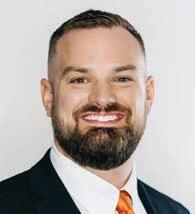
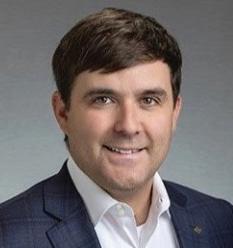
life watching her father build a successful independent agency, the answer was clear. “I was fortunate enough to see what the insurance industry looked like through my dad,” she said. “As I talked to him more, I began to say, ‘I think I want to do that. It sounds like a better gig.”
She feels fortunate for the experience at JP Morgan prior to joining the agency. That experience helped her target middle market financial services firms that the insurance industry doesn’t necessarily target, she said. But working in banking first helped her realize the “quality of life” that a career in insurance could offer.
Leaving a career in banking meant new challenges. “I took a huge pay cut,” she said. “But I think for me, I was at a point in life where I thought that kids were on the horizon and I wanted to be in a certain financial position before I had kids.”
She knew building a book of business would take work in the beginning. “I made a hundred cold calls a day,” she said. She couldn’t rely on current relationships to build clients, she said. “Most of our family and friends were already insured by my family.” That meant she had to find new relationships to turn into clients.
Swingle Robertson believes there’s no better industry for females, especially working mothers.
“I love talking to people when they’re younger and even before they have kids and say, ‘Hey, if you’re thinking about having a family and being a working mother, there’s no better job than this,’” she said. “Being on commission sounds scary when you’re just out of school, but it’s really liberating, too, because the buck stops with you,” she said. “If I think it’s important to chair my children’s auction, which is going to bring me out of work for X hours a week for a few months, then that’s on me and I’m able to make that decision.”
She saw firsthand a top female producer and shareholder in her agency setting that example. “She set pretty good boundaries on her work-life balance, but she was one of the top producers year after year,” she said.
Swingle Robertson said she would love to see more females and people of different backgrounds in production roles in the future. “There’s so much untapped potential.”
Her advice to young professionals joining the insurance industry — don’t be afraid to make those cold calls, she says. “Cold calling gave me the opportunity to practice and hone my skills before I tapped into a network,” she said. “Learn on those cold calls; you have nothing to lose,” she added.
32 | INSURANCE JOURNAL | APRIL 15, 2024 INSURANCEJOURNAL.COM
Avery Moore
Dane Beasley
Brock Elliott

‘You Can Do It’
Avery Moore, president and CEO of ECI Insurance based in Piedmont, Oklahoma, purchased her family’s agency in 2021 and became the third generation to carry on the family legacy. Today, the agency employs a staff of 15 — 14 of whom are female.
Moore has taken to being an active advocate not only for her clients but also for the industry. She sits on the Big I’s National Young Agents Committee, was named Oklahoma Young Agent of the year for 2018, Young Gun of the Year for 2017, named one of Oklahoma’s 30 under 30, and Oklahoma Agent of the Year 2021.
She says insurance as a career choice has a negative connotation. “Let’s just call a spade a spade,” she said. “Most people do not wake up dreaming to buy insurance or work in insurance.
“While I think insurance has a great mission, we just haven’t created a sexy picture, and at the same time, it’s the best kept secret,” she said. So she spends a considerable amount of time “preaching” about the opportunities the industry holds for young people, especially women.
The industry’s talent gap is here, she says. “It’s about to get really bad for principals and people who are hiring because we’re not going to have enough
people; it’s pretty miserable to hire right now.”
It can be even harder to compete for talent for smaller agencies, she said. She’s about to hire her first fully remote position, something she wouldn’t have considered as an option just a few years ago. “Our next thing we’re implementing is unlimited PTO, which if you would’ve asked me two years ago, I would have said that’s crazy,” she said. But in today’s competitive hiring world, she’s doing whatever she can to create benefits that attract people. “We’re not in the big city and we’re not a mega agency that can match up on benefits and pay all the time.”
She continues to “preach” to high schools and colleges about the opportunities the industry has to offer. “The generation above us did us a disservice by not preaching how good it was,” she said. “Maybe it was fear of competition, they wanted to keep their business, or they were just so busy working their business, they didn’t preach,” she said.
“I always tell women when I get to talk to colleges or at high schools or whatever that this is literally the best gig. I can make as much money as I want. There is no cap,” she said. “If I wanted to work one month a year, you can figure out a path in the sales world. Or if you wanted a steady career where you aren’t living off commission, there’s a path for that too in service roles.”
But she also encourages current account managers and CSRs to consider taking a leap into sales. “The first thing I would say to female account managers and CSRs that are sitting there watching male producers and thinking in the back of their head, ‘I could do
it,’ but never actually go for it — yes, you can do it,” she says. “You can be so incredibly successful,” she added. “There is a massive amount of business that’s about to be out there” as more agents get ready to retire, she added. “There is tons and tons of business out there that can make you very profitable. And at the end of the day, you are doing a really good thing in this world, especially if you can believe in the products that you’re selling.”
Be Curious
For Dane Beasley, senior vice president at FBBInsurance, a career in insurance came after a few other professional experiences. While earning a degree in accounting from the University of Mississippi, an internship led Beasley to the realization that a career in public accounting wasn’t for him.
After graduation, he turned down job offers from a few CPA firms and bought a one-way ticket to Washington, D.C., without a job. “I was like, ‘I’m going to make it work and figure it out’ so I got a job on the Hill,” he said. He knew he didn’t want to pursue a long-term career in politics, but needed to pay the bills. After a couple of years, he jumped into commercial real estate development, but soon after getting married, he moved back home to Jackson, Mississippi. Real estate development didn’t translate well from DC to Jackson so he began to look at a career in insurance developing captive programs.
“I was intrigued by captive programs,” he said. “It was a different way of looking at insurance and the more I learned about it, the more I believed in the product, and I thought, ‘Well, if I were a
business owner and I was taking safety seriously, investing in my operation, I think I would want to be in a captive.’”
That was five years ago and today Beasley’s primary focus is group captives for construction and transportation. He helped launch the first final mile group captive for Amazon Delivery Service Partners in 2020.
He said he’s glad to have experienced other careers outside insurance. “I’ve picked up commercial estate accounts because of having a background in that world,” he said.
His best advice for young professionals joining the world of insurance is to be curious and ask questions. The first year is all learning, he said. But the learning never stops, he added.
“I’m learning something new every day,” he said. Even his mentor/partner who’s been in the business for 50 years is still learning, he said.
“I feel like the best way to learn our business is to get out there and talk to people,” he said. “Where I learned the most was just getting out, going on the road with other producers, and seeing how the conversations unfolded.”
Then, get in the car after the meeting and ask questions. “Ask as many questions as you can,” he said. “Meet with as many folks as possible. … People are always willing to help and from my experience, that goes a long way.”
And pay it forward, he suggests. “As I mature in the insurance industry, I would like to pay it forward and mentor young producers because I found so much value in that and owe so much of my success to the older producers in our agency that took the time to answer my questions.”
APRIL 15, 2024 INSURANCE JOURNAL | 33 INSURANCEJOURNAL.COM
Myils Rodrigue
Special Report: Young Agents Survey
What Young Agents Think About the P/C Industry
What Young Agents Think Makes a Good Work Environment
1. A family feeling where you know you are cared for, loved and have people to pick you up when outside stressors may temporarily affect your work. Flexibility and a willingness to work as a team is so important.
2. Client relationships, flexibility, organized management, compensation, and of course vacation time!
3. In this order: Work/life balance, compensation, being challenged, and recognition of good work. Compensation absolutely needs to be reasonable and adequate. However, I work to live not live to work.
4. An atmosphere where mutual respect and teamwork meet and conquer the challenges of balancing work life with personal responsibilities.
5. I want an employer that supports the whole of my person by encouraging hard work, living your outside life to the fullest, and making sure we have time to play, too.
6. Having management who understand you have a life/family outside of work but also feeling like you have a work family as well. Being paid what you’re worth.
7. Doing good for my clients and the agency is my top priority and always leads my actions.
8. Obviously things such as compensation are very important, but helpful and like-minded coworkers can make the workplace more enjoyable.
9. Good Compensation and flexibility for a working mom to afford daycare and be able to have some time to interact with their kids on the weekend.
10. Compensation is high on the list but closely followed by a good work life balance.
11. Flexibility. To me, if you can work with me and what I’ve got, I’ll bend over backwards to do what I can for you/the company.
12. A positive attitude and culture of helping and supporting each other in the office, with a common goal of doing our best for the clients.
13. Compensation and a friendly work environment are at the top for me. I don’t want to deal with having hostile coworkers
(luckily everyone at my agency gets along great). Flexibility with time off requests is important also.
14. Good comp, hands-off management, flexibility (work from home days) and advancement opportunity.
15. Team atmosphere with colleagues that have a positive and hardworking attitude every day, flexibility, and good compensation.
16. All of this. People are not robots. Every person is an individual, a human being. Understanding that is fundamental to societal growth — it sounds easy enough, but in my opinion it is not practiced or preached nearly enough.
17. Teamwork and knowing if you need help then someone can help you.
18. Flexibility, doing good for the community, earning a fair compensation for the work that I do and the value that I provide to the agency.
19. Treating employees with equity no matter what position they hold.
20. Being friends with your coworkers, fair compensation, and an understanding leadership.
21. Flexibility with being in office, being able to come and go as I please as long as I take care of my business and my clients, and hit goals.
22. Good working environment. Giving employees what they need in this economy. Annual raises.
23. Most important thing is trusting employees to do the correct job. ... It’s impossible to truly know the dynamics unless you’re involved, so a boss that determines how something needs to be handled without knowing the facts is frustrating.
24. A combination of flex work along with compensation based on merit and work.
25. Connectedness. A workplace environment with buy-in from everyone. One with energy, enthusiasm, and excitement to work together; to traverse this stressful industry and market, together; to win, together.
34 | INSURANCE JOURNAL | APRIL 15, 2024 INSURANCEJOURNAL.COM
Excellent Good Fair Poor Customer service 18.0% 57.5% 20.0% 4.5% Public image 12.9% 20.9% 36.3% 29.9% Treatment of employees 19.4% 53.7% 23.9% 3.0% Professionalism 26.9% 55.7% 15.9% 1.5% Ethics 27.4% 46.3% 21.4% 5.0% Career attractiveness to young professionals 9.5% 19.9% 44.8% 25.9% Use of technology 12.4% 37.3% 37.8% 12.4% Marketing and advertising 17.4% 41.3% 32.3% 9.0%
What Young Agents Like Most
1. I am able to provide a lifestyle for my family that would be unattainable in most other fields. The harder I work, the more I produce. I am in complete control of my compensation. It is a challenging, ever-changing industry that allows me to grow and continue to learn.
2. The ability to step in and be involved in so many individuals’ and businesses’ lives on a daily basis. The opportunity to be the person that is called on in the tough situations.
3. The freedom to be able to decide the best way to grow my book. There’s not one correct way to be successful in this industry, being given the freedom to determine what I think will be the most successful way is nice compared to friends in other industries that don’t have that freedom.
4. The opportunity to help people every day. Meeting new people and encouraging youth to consider the industry as a career path.
5. Ability to solely focus on client outcomes and motivations.
6. I love helping people get the best coverage at rates that work for them.
7. There are so many things that I love about this career! Number one, I LOVE learning about the operations of my clients and really understanding their business. ... Number two, limitless learning! You have to love to learn to be in this career and you have to know you will never know it all.
8. You can learn as much as you want as fast as you want - there are no artificial barriers to my success.
9. Being able to leave my clients better off than before we spoke. I have gotten a lot of reviews online that show people are truly appreciative of my efforts and that leaves me with something I can be proud of knowing the behind-the-scenes stuff I do to be the best agent I can does not go unnoticed.
10. I like the freedom of working wherever I want and the relative security of my job. People will always need insurance and I think the independent agent will always be a top choice for them.
11. Working towards ownership to have a piece of something.
12. I love building relationships with people. I also love the challenge of a complex business policy. It’s fun to piece coverage together and dive into business operations and gaps in coverage.
13. Never bored. Burned out yes, but not bored, nothing is the same on a day to day basis, good or bad.
14. I think the independent agency system offers more flexibility to the broker as well as better service and options to the client.
15. I love that I am able to meet people and help them through challenging situations. I love watching their families and businesses grow and getting to be a part of their lives.
16. I enjoy helping people. The excitement in a client’s voice when you save them money or when they get a new vehicle, house, etc. You share in those moments with them and also get to protect those valuable assets for them.
17. I am able to give myself a raise everyday if I sell something new. I am in control as an individual contributor. I am able to maintain and grow my book of business and retain them, should they want to continue to do business with me.
18. You are working with lots of different people, markets, agents, etc. so there is never a dull moment. Every day is a new challenge even though it’s the same general task.
19. Helping my clients realize the value of insurance.
20. Working with so many different carriers. It gives us a lot of options to help our customers get insurance policies that are the best fit for them.
What Young Agents Like Least
1. This is hard. I guess it would be OK, maybe, if I were making more than a captive agent but I know a few captive agents that make way more than I do and do way less work.
2. The number of unethical agents in the business. I don’t have any problem losing bids to agents that do it fairly, but when they go about the process in the wrong way to the detriment to the client and they know they are hurting the client, that always rubs me the wrong way.
3. At times, it can feel as though getting beyond your current position might be difficult as management positions will be given to family first.
4. It’s not a “sexy” career to the masses, but if only they knew how amazing the industry truly is, they might change their mind!
5. It is hard to keep track of all the markets we represent and their current appetites. Quoting consumes a lot of time.
6. The stress carriers place on agents by constantly changing rates, dropping clients, pulling out of markets, carrier production requirements.
7. Dealing with customers when their premiums increase. We are not the ones increasing the rates, but we usually take the brunt of a customer who is unhappy. I understand it is part of the job, but it can be tough to explain to people why their premiums increased 30% when they haven’t had an accident in years.
8. It remains an old white man’s club. I work to change this every day.
9. Constantly delivering absurd rate increases, causing some to go out of business completely due to the expenses. Constantly advising on more coverage exclusions & coverage limitations, now it’s to the point insureds ask what the policy DOES cover.
10. The perception that a producer isn’t a hard worker or high achiever if he or she doesn’t work 80-hour weeks. We are expected to wear our ‘burnout’ like it’s a badge of honor.
11. Telling a client there is no coverage on a claim.
12. The attitude of some of the long-timers can be frustrating, there is no “need” to change, so why change?
13. Customers that cost more time than it’s worth. Small accounts that are really high touch are hard to deal with, especially when you want to focus on your larger clients that should be more high touch.
14. Folks who aren’t privy to the industry may view us in the industry as used-car salesman, so to say. But I believe that view is changing with many of the young folks entering the industry.
15. The stress of finding new prospects, fighting carriers all day long, and the hardening insurance market.
16. INFLATION. Rates are causing insureds to flood their agencies with requote requests, while at the same time, carriers are locking down their underwriting guidelines making it harder and harder to place or replace coverage.
17. The way current carriers are treating the independent agents. We are seeing terminating [of] decade old contracts, lowering commission, and being very difficult to work with.
18. Smaller agencies that favor less tenured employees because if interpersonal relationships. Then those people getting raises and management positions without earning it.
19. Sometimes I am so busy I can’t always give attention to just one client which I really would like to do.
20. The first few years are hard, prospecting and trying to make connections with the right kind of client can be difficult and frustrating. It’s a very technical industry and building confidence in coverage can be hard.
APRIL 15, 2024 INSURANCE JOURNAL | 35 INSURANCEJOURNAL.COM
Closer Look: Casualty Worst Is Over: Most of Casualty Reserve Hole May Be Filled, Analyst Says
By Susanne Sclafane
Predictions that the property/casualty insurance industry is in the midst of repeating the type of loss reserving cycle that accompanied the hard market of the beginning year of this century may be overblown, according to an analyst.
In fact, William Wilt, president of Assured Research, believes that “much (but not all) of the financial hole the industry had dug for accident years 2016-2019 has now been filled.” The industry analyst and Fellow of the Casualty Actuarial Society delivered the assessment as part of his firm’s analysis of the year-end 2023 carried loss reserve position for the P/C insurance industry, which Assured Research puts at roughly $11.7 billion redundant in a new report titled, “P&C
Loss Reserves: Keep Calm and Carry On.”
While that’s about half the redundancy Assured Research estimated for year-end 2022, for some well-reserved individual lines of business, including workers’ compensation and short-tailed property, estimated reserve redundancies are even bigger for year-end 2023 than they were for year-end 2022. (Editor’s Note: The Assured Research analysis is limited to the last 10 accident years.)
Like the year-end 2022 study, the Assured Research analysis for year-end 2023 puts the biggest deficiencies in the liability reinsurance, commercial auto liability and other liability insurance-occurrence lines. But the latest annual report notes
that the industry added some $8 billion to loss reserves for these two “most problematic lines.”
“We believe a substantial portion of the adverse development expected on the problematic accident years of 2016-2019 is now behind us,” Wilt wrote in the Assured Research report, which starts with a comparison of adverse development in the other liability-occurrence line that emerged for accident years 1997-2002 during the previous hard market and expected development for accident years 2015-2019, showing a better picture for the more recent years. A graphic in the report notes, for example, that accident year 1999 ultimately had 31 loss ratio points of adverse development. In contrast, the
worst year of among the 20152019 accident years — 2017 — is only expected to develop by 13 points, according to Assured Research’s latest estimates.
Bottom line, there is still some development left in those problematic 2016-2019 accident years that executives at companies like AXIS Capital, Markel Corp., Everest Group, and Swiss Re, among others, have been talking about on earnings conference calls.
But for other liability-occurrence, what is yet to come will not put the industry back into “a 9/11-era reserving cycle,” according to Assured Research.
“We expect more adverse development for the line but we also believe the worst is over,” the report says.
In addition, Assured
Research doesn’t estimate “that the industry in commercial auto has meaningfully more reserve charges to take” for the problematic accident years, Wilt said on an audio digest he recorded to summarize the report findings for subscribers to his firm’s research.
Still, there are some problems ahead for commercial auto insurers. “It just looks bad,” he said, referring instead to concerns about the 2021, 2022 and 2023 accident years, which look to be “short by some five percentage points.”
“That’s a problem not just from a reserving perspective, but also from a pricing perspective,” he said, contrasting other liability where Assured Research’s ultimate loss ratio estimate for accident year 2023

36 | INSURANCE JOURNAL | APRIL 15, 2024 INSURANCEJOURNAL.COM
almost matches the industry aggregate ultimate loss ratio.
The report presents incremental reported loss ratio histories by accident year and development period (triangles), along with commentary, for seven of the 17 lines of business Assured Research studied — workers’ comp, property insurance, other liability (claims made and occurrence), private passenger auto liability, liability reinsurance and commercial auto liability.
While Assured Research estimates deficiencies of about $3 billion for both the private passenger auto liability and liability reinsurance lines, that shortfall for private passenger auto liability represents less than 2% of carried reserves for the line. For liability reinsurance, it’s more than 8%.
Throughout the report, Assured Research refers to the impacts of economic and social inflation on loss costs, and the pricing implications of reserve positions by line. On a “technical commentary” page of the report and in the audio digest, Wilt revealed that his firm has made explicit, conservative adjustments for inflationary impacts that “may not be baked into loss development factors” already.
The conservatism probably added $18.6 billion of indicated reserves (across all impacted lines) to the analysis, he noted.
Separately, analysts at Morgan Stanleyhave estimated that social inflation added $13.3 billion-$24.5 billion of excess losses to the commercial auto liability line — or 7%-13% of industry commercial auto losses from 2013-2022.
Sclafane is executive editor of Carrier Management.
What Industry Executives Are Saying About Loss Reserves, Social Inflation
Executives at carriers and reinsurers that announced reserve loss charges taken during fourth-quarter 2023, and even at some that did not, discussed the “problematic accident years” and lines of business, drawing their own comparisons to prior reserving cycles, and specifically focusing on the impacts of social inflation during recent earnings conference calls.
At Everest Group, where $397 million of releases in short-tail reinsurance and mortgage lines offset $392 million of additions for casualty insurance lines, Chief Financial Officer Mark Kociancic explained the casualty insurance charges.
“The entire industry faces the real impact of social inflation focused on the 2016 to 2019 accident years,” Kociancic said. “Everest is seeing some of these same trends, and we’ve prudently acted on them given the now well-developed loss patterns for those years,” he said, referring to higher severity in general liability and, to a lesser extent, in commercial auto liability.
At Arch Capital, where overall reserves developed favorably, Chief Executive Officer Marc Grandisson responded to an analyst’s question about the impact on reserve additions across the industry on market conditions with a reference to the hard markets that emerged in the wake of the 9/11 attacks and earlier ones.
First, the CEO described the uncertainty inherent in actuarial predictions that were based on loss development histories disrupted over the last two or three years by pandemic-related factors, such as court closures, “and then the bout of inflation.”
Noting that reserve estimates feed into pricing estimates, he said, “There’s a lot of data that’s really hard to pin down and get comfortable with to make your prediction for [where] you should be pricing the business …. We’re in a situation where people have lesser visibility about what the reserving will ultimately develop to.”
That means having to adjust pricing “on the fly,” he said.
“Even if you have that information and you make some corrective actions, it still takes a while to evaluate whether what you did was enough — or was what you needed to do,” he said. “We already had a couple of rate increases in casualty starting in 2020,” he said, referring to industrywide actions. “But I think that now we’re realizing that maybe it’s a little bit worse collectively as an industry than we thought. There’s a lot more uncertainty. [And] a lot more inflation, as we all know, certainly, is a big factor.”
Markel CEO Thomas Gayner, in his letter to shareholders delivered a summary of social inflation, reminding readers of social inflation’s impacts on older hard markets during the 1970s and 80s liability crises — and prophesying a temporary end to what he views as a cyclical phenomenon.
“Social inflation (the ‘new new’ term for loss trend) is a recurring cycle in the insurance industry. As was the case in the inflationary environment in the U.S. in the 1970s and early 80s, spikes in legal costs and jury awards, fueled by factors such as litigation financing, are pushing total loss costs up dramatically.
“At that time, the asbestos crisis was the headline phrase that provided a shortcut description of spiraling loss costs. Today, it’s called social inflation ….
“Just as occurred in the wake of the ‘insurance crisis’ of the 70s and 80s, things like ‘Tort Reform,’ ‘Loser pays,’ changes in laws regarding liability, changes in limits of insurance coverages, and other forces coalesced to get the ‘inflation’ of that time under control.
“Today strikes me as a similar rebalancing era …. This is not new. The problems of social inflation can and will be solved. It will take time and compromise to stabilize the markets, but that will happen,” he wrote, referring to “ongoing actions in bellwether states like California and Florida [that] will demonstrate how we can find a way forward to improve and rebalance insurance markets.”
APRIL 15, 2024 INSURANCE JOURNAL | 37 INSURANCEJOURNAL.COM
Idea Exchange: Cyber
Cyber Risk Strategies to Minimize Business Disruption, Control Liability and Litigation Exposure
 SBy Brandon D. Hollinder, Esq.
SBy Brandon D. Hollinder, Esq.
ecurity threats are getting more sophisticated — and expensive — and this trajectory will continue. Digital footprints and technology usage will only keep expanding, adding to vulnerability and presenting more opportunities for compromises to occur. This complexity puts all companies in the path of a breach.
According to a report released in summer 2023, federal data breach class action filings have risen 154% in a year’s time. The 2022 FBI Internet Crime Report shockingly reported that there were 800,944 cybercrime complaints in 2022.
New technology drives excitement and innovation but also introduces new risk. Chat GPT is a fitting example. It is one of the most heralded and discussed technologies in the world but has just as quickly been the victim of breach already in 2023.
What is worse than a breach and attack?
The resulting class action lawsuit or other liability for failing to prepare and respond well. This increases costs and can damage reputations. To control liability and litigation exposure as well as minimize business disruption, we’ll discuss the top areas for cyber risk exposure and key cyber preparedness strategies and practices insureds should implement.
Areas of Cyber Risk Exposure
To prevent having to file a claim against a cyber liability insurance policy (or fund the remediation yourself), it’s important to perform regular and specific cyber risk analysis.
Since the cyber threat landscape is dynamic, it is crucial to keep informed on current threats and trending attack methods. It is also critical to determine how these trends fit in with the company’s specific risk profiles, security controls, and priorities. Top areas of attacks include the following:

Cyberattacks. The top attack vector. For cyberattacks, phishing and ransomware were the top methods used by cybercriminals. Malware came in third, with a stunning 89% increase from the first half of 2022.
Deepfakes. Deepfakes are videos, pictures or audio that have been convincingly manipulated to misrepresent a person saying something they never said or doing something they never did. Cybercriminals can access public company data and make changes or synthesize new content via a deepfake. Sixty six percent of participants in a 2022 VMware survey reported that their organization experienced a deepfake incident. The advent and adoption of technologies such as ChatGPT only increase this risk and the realism of deepfakes.
M&A activity. Threat actors watch for talk of M&A activity and view this as an opportunity to attack. There are a lot of moving parts and data transfers, which can lead to diminished security awareness and more vulnerability. This increases the likelihood of ransomware attacks, phishing and other attempts to access sensitive or proprietary information.
Supply chain attacks. Supply chain
attacks can exploit vulnerabilities in the physical flow of assets — including processing, packaging and distribution processes. These attacks can take many forms, such as malicious code injections into legitimate software, hijacking software updates, and attacks on IT and operational technologies. They involve creating or taking advantage of security weaknesses in solutions companies trust.
Everyday activities (system and human error). Example: An employee sending out the wrong file or losing their laptop could lead to a data compromise.
Risk Strategies
Insurance carriers now require cyber preparedness plans before they provide new or renewed cyber coverage, and there is an ever-increasing web of privacy and security laws and regulations globally that companies must be prepared to comply with. Classic examples include GDPR and California’s Consumer Privacy Act, and more recent examples include the SEC’s recently adopted rules and India’s recently passed Digital Personal Data Protection Act.
While cyber preparedness practices are
38 | INSURANCE JOURNAL | APRIL 15, 2024 INSURANCEJOURNAL.COM
plentiful and flexible, it is critical not to discount legal’s involvement. While incident response heavily relies on technical and forensic actions, legal implications are just as important and will come into play at every phase. Breach notification, impact assessment, privacy law compliance, and regulatory reporting are a few areas where the legal team will have an integral role in response efforts.
Building a deep culture of cyber preparedness is essential in today’s landscape. There are several best practices recommended for organizations to invest in to help implement preventative measures and reduce the risk associated with cyber events. Some of these include: Collaborative training and planning. Organized response plans with a playbook outlining roles for key stakeholders (including the cyber insurance carrier) build an internal culture of cyber awareness. This often includes training on detection and reporting procedures for employees, and mock breach tabletop exercises for employees, outside vendors and legal counsel. In these exercises, key stakeholders can discuss assessments, determine risk tolerance, and consider alternative approaches that lessen risk while still advancing goals. Documentation should be reviewed and updated at least annually and anytime there is a material change in technology or key stakeholders.
Information governance. An outside consultant can help mitigate the risk of cyber incidents by reducing the volume of data stored in a legally defensible manner, data mapping and categorizing files, and advising best practices to follow from both a compliance and security perspective. Employ people to deploy processes that will enable the benefits your technology can provide.
Threat detection software and services. Specific software that analyzes your entire security infrastructure can identify malicious activity that could compromise the ecosystem. The use of software can be enhanced by establishing or hiring experts for a security operations center. These experts can monitor activity in your environment and assess threats to it with 24/7 eyes on glass and retainer
programs to ensure they are prepared to respond to any threat or suspicious action immediately. These can be deployed and utilized for both compliance and security purposes.
M&A cyber playbook. Create a playbook outlining roles for key stakeholders and outlining a separate category of due diligence review into cyber risk. Develop strategy with “security by design” to align expectations and ensure that cyber risks are at the forefront of due diligence investigations so teams can identify gaps and react accordingly. As with training and planning, documentation should be reviewed and updated at least annually and anytime there is a material change in technology or key stakeholders.
Regulatory monitoring. Current and future legislation around the globe will continue to influence the level of cybersecurity needed to protect sensitive information and dictate response obligations should there be an event. Discounting this step and similar obligations such as contractual mandates can result in legal exposure and failure to meet your obligations during and after a breach event.
Retain cyber counsel. Organizations should consider retaining outside counsel specializing in cybersecurity and breach response or hiring a staff attorney practicing in this area. This can serve a dual
purpose by also helping meet compliance obligations. Some global data privacy regulations obligate organizations to have a designated data privacy officer on staff or engage cyber counsel.
Retain incident response vendors. Vet and contract with your response vendors before you are in an actual event. No one wants to rush through contracting processes, and the last thing you will want to be doing while in a breach situation is a procurement exercise. By taking care of these steps ahead of any breach you can ensure you pick a competent provider for these services, which is critical when avoiding the risk of your event turning into a class action event.
While cyber awareness seems to be improving, the sophistication of cyber attacks is matching that process. The technology landscape can be a treacherous one to navigate, but by monitoring cyberattack trends and implementing these strategies, organizations will be better equipped to anticipate and respond to cyber incidents before a devastating breach occurs. This will diminish the chance of class action activity, compliance violations, lost business and exorbitant costs.
Hollinder is Epiq’s vice president of eDiscovery and Cyber Solutions.

APRIL 15, 2024 INSURANCE JOURNAL | 39 INSURANCEJOURNAL.COM
Idea Exchange: The Competitive Advantage

Insurance Agency Trust Accounting –More Important than Ever
My articles regarding insurance agency accounting seem to elicit some of the most positive feedback of any subject I discuss.
 By Chris Burand
By Chris Burand
Trust accounting is the bedrock, the most essential aspect of insurance agency accounting — bar none.
Insurance agency/brokerage trust accounting means accounting for all the monies you hold in trust for both clients and carriers. Such monies can be credits to be returned to clients, monies paid by clients ahead of their due date, monies held on behalf of carriers, and even in
certain market niches, contingencies.
Good trust accounting consists of holding these monies in a trust account separate from all other monies. It also consists of having specific payable and receivable accounts, separate from operating payables and receivables. The payable account is typically known as premiums payable and sometimes binder bill, to use an old-fashioned term for billing clients ahead of their policy effective date.
The receivables are typically known as premiums receivable. These are PREMIUM accounts, and this is an important distinction. Premiums are not owned by the agency. The agency has no title to premiums. Premiums are held in trust, which is why trust accounting exists.
Trust accounting is why an agency using cash accounting can incur bad debt. Typically, a business using cash accounting cannot incur bad debt. But when related to trust accounting, you can have bad debt because you are making the other party whole on monies that were never your monies. This is why agencies’ accounting is a combination of cash and accrual, rather than one or the other.
Trust accounting is problematic for many reasons including the fact that the trust ratio, the way an agency’s trust position is measured, is not a GAAP (Generally Accepted Accounting Principles) measure, so most accountants know nothing about it. This sometimes leads to bad advice, like spending the money that you are, by law,
40 | INSURANCE JOURNAL | APRIL 15, 2024 INSURANCEJOURNAL.COM

holding on a fiduciary basis.
The trust ratio is (generically because the legal definition varies by state): cash + premiums receivable / premiums payable + credits + binder bill. This ratio must be greater than one or the agency is out of trust and likely operating illegally, and almost definitely in violation of their carrier contracts.
All States Are Trust States
All 50 states, territories, and the District of Columbia have trust laws. Considerable misunderstanding exists in our industry complicating trust accounting further. That misunderstanding is that only a handful of states are trust states. All states are trust states. The difference is that most states allow commingling of operating money while a handful prohibit commingling. But just because commingling is permitted does not make it a good idea.
Trust accounting is further complicated
because many agency management systems are not built to do trust accounting at all, and others do it poorly. This might not matter to you unless the insurance commissioner investigates (which is unlikely) or until you sell your agency, which is guaranteed.
When I value agencies using systems that cannot manage trust accounting, I must always explain that unless you can prove you are in trust, you are not readily sellable because if you are out of trust, your carrier contracts likely stipulate that they now have title to your book of business.
Even if your agency is located in a state where you may legally commingle accounts, it is not a good idea. One important reason it is not is because by doing so, you are making it easier for plaintiffs to pierce your corporate veil, especially if you pay personal expenses, use corporate vehicles for personal use (without maybe doing all the correct paperwork), etc. This will be doubly true if you are out of trust.
Relative to the corporate veil, the plaintiff’s position is likely to be that by not protecting client assets per the firm’s fiduciary responsibility and by comingling client monies with operating monies and maybe personal expenses, the corporate veil does not exist. The argument has logic to it and plaintiffs seem to be winning more such cases in many industries.
Historical reasons still exist for not commingling monies, such as, it is simply better management. A good practice is to create a trust account specifically named “trust” account in order to have more banking protection if a bank was to go insolvent.
Another reason is due to what I am afraid is an increase in fraudulent insurance products. The market today is so hard and rates so high that it is easier for fraudsters, some of which have licenses and some do not, to sell their products.
Desperation causes agents to make bad decisions relative to the markets they use. I have already seen agencies severely damaged because they failed to investigate their markets adequately. The worst thing to do with these markets is to commingle your clients’ monies with your operating funds because it makes it appear you are part of the fraud or at least way too sloppy to actually be caring for your clients.
Different states have different laws as to when ownership and responsibility shifts between an agent and a market. For example, when a retail agent sends the money to the broker, is the responsibility now with the broker? The answer is that it varies. I have had clients successfully sued after they forwarded large checks to a broker who disappeared with the premium monies. Sometimes it is the broker’s carrier who sues the retail agency and sometimes the client. But if the monies are all commingled, then it looks like you have sloppy accounting, and that you are being lazy in completing due diligence on your markets, as well.
With a good agency management system, good trust accounting requires no more effort once your bookkeeper is educated on the subject. My clients with good bookkeeping also tend to be more successful because it makes them more aware of how much money is actually theirs that they show on their balance sheet.
Good bookkeeping protects agents from being out of trust and helps make their corporate shield stronger. All states require you to be in trust 365 days a year. Your carrier contracts require it, too. Do your trust accounting correctly to gain all these protections and avoid the serious consequences of failure. Other than your agency, what else do you have to lose?
Burand is the founder and owner of Burand & Associates LLC based in Pueblo, Colo. Phone: 719-4853868. E-mail: chris@burand-associates.com.
APRIL 15, 2024 INSURANCE JOURNAL | 41 INSURANCEJOURNAL.COM
Idea Exchange: Is It Covered?
Logic & Language and Forms & Facts
Designated Premises, Operations and Projects Endorsements
In 2017, I developed a webinar called “Raiders of the Lost Coverage: Insurance Jones and the Temple of Exclusions.” It evolved from an earlier seminar I did with the late John Eubank, CPCU, ARM, called “Horrible Commercial Lines Policy Forms and Endorsements to Avoid or Be Wary Of.”
 By Bill Wilson
By Bill Wilson
Both programs were about endorsements that severely reduce coverage under fairly standard policy forms.
These are usually not endorsements that agents request, but rather forms added by insurers for various reasons. In my March 4, 2019, column, I wrote about three sources of coverage gaps that lead to disputes:
• Failure to identify exposures;
• Failure to insure known exposures; and
• Failure to QC policy deliverables.
The third source is one all too often overlooked. To paraphrase an old adage, “Be careful what you DON’T ask for!”
When an agent orders a package of policy forms, the carrier providing the forms will always attach forms not specifically requested by the agent. Some of these are mandatory under the regulatory filings of the insurer, but not all of them. And many of them can be removed upon request, sometimes with a premium charge. Agents should be wary of any such endorsements that limit or exclude coverage.
One such category of endorsements limits coverage to designated premises, operations and projects.
For example, ISO has a series of endorsements under its BOP, CGL, and umbrella/ excess programs, the BP 04 12, CG 21 44, CU 21 11, and CX 21 10. Some insurers have similar proprietary forms. These ISO forms were revised, in most states, in 2017 and the revisions in the forms arguably signifi-
cantly reduce coverage while attempting to reduce perceived ambiguities in the form language. The International Risk Management Institute (IRMI) advised that the CGL form change in particular “… marks a significant and historically unprecedented narrowing of coverage that has traditionally been available to general liability insureds with respect to designated premises.”
As evidenced by numerous court cases, these “designated premises/projects” endorsements have been problematic for years because of the language that says that coverages apply only if arising out of “The ownership, maintenance or use of the premises shown in the Schedule and operations necessary or incidental to those premises... .”
The question has always been, to what extent are operations away from a designated premises covered? How far away can you be and what constitutes “necessary or incidental to?”
Case law is all over the place on what this language means.
In their filing, ISO cited two recent court cases where coverage was found for BI and PD that occurred, in one case, at an unscheduled premises (largely because the “negligent decision” from which the BI/PD arose took place on the scheduled location) and, in another case, 500 miles from the designated premises. As a result, ISO has revised the language on all of the aforementioned forms so that coverage applies only if loss:
(a) Occurs on the premises shown in the Schedule or the grounds and structures appurtenant to those premises; or
(b) Arises out of the project or operation shown in the Schedule.
For designated premises, there is no longer any automatic coverage for “operations necessary or incidental to those premises.” This is true premises-only liability that
harkens back to the time of owners, landlords and tenants liability forms in that there is no coverage that takes place off premises (or appurtenant grounds/ structures) UNLESS such off-premises operations are specifically scheduled. The question is, how do you know what operations might be necessary or incidental to the designated premises so that you can list ALL of them?

42 | INSURANCE JOURNAL | APRIL 15, 2024 INSURANCEJOURNAL.COM
Aside from that, what are the implications if hired and nonowned auto coverage has been added by insurers to these forms?
Many carriers have H/NO endorsements for their CGL policies. ISO does not. They removed this endorsement from the GL line over 30 years ago and coverage in the ISO program must be added via Symbol 1 or Symbols 8 & 9 under their BAP program. But ISO still provides the BP 04 -04 – Hired Auto And Non-Owned Auto Liability endorsement in their BOP program.
So, for H/NO coverage, what is the potential implication for this designated premises change? A literal interpretation would be that, if only a premises is scheduled without any mention of a project or
operation, then the H/NO coverage under the BP 04 04 only applies to accidents that occur on that premises. Needless to say, this makes the coverage under the BP 04 04 virtually illusory for this exposure and certainly can’t be the intention of the BP 04 04. However, that’s exactly what a literal reading of these forms would indicate.
As a result, when an ISO BOP policy includes H/NO coverage under the BP 04 04 AND the designated premises limitation BP 04 12 endorsement, in addition to the schedule premises, a notation should probably be made in the “Project Or Operation” schedule that coverage applies to the operation of autos covered by the BP 04 04 (along with a list of any other
operations necessary or incidental to the scheduled premises). If your carriers also provide H/NO coverage via proprietary endorsements on their CGL policies, the same action might be taken on the CG, CU, and CX Limitation endorsements.
The better solution is to have the BP 04 12 REMOVED from the policy, if at all possible, in order to avoid these issues. And don’t forget to QC those policy deliverables … be careful what you DON’T ask for!
Wilson, CPCU, ARM, AIM, AAM is the founder and CEO of InsuranceCommentary.com and the author of six books, including “When Words Collide…Resolving Insurance Coverage and Claims Disputes.” Email: Bill@InsuranceCommentary.com.

APRIL 15, 2024 INSURANCE JOURNAL | 43 INSURANCEJOURNAL.COM

Idea Exchange:
Ask the Insurance Recruiter
Key Attributes to Help You Choose an Insurance Recruiter

When selecting a recruiting partner, there are several important qualities and factors to consider. The recruiter should be an advisor who adds value to your talent acquisition efforts and is a brand ambassador who represents your organization the same way any employee would.
Here are some of the most important things I recommend insurance organizations look for:
Industry Expertise. A recruiter who exclusively specializes in insurance is your best choice for two reasons. First, they understand the unique challenges, qualifications, and skills required for your roles. Second, if 100% of their time is spent within the insurance industry then 100% of their candidate database is filled with experienced insurance professionals.
Of note, it may be difficult to find an insurance recruiter with a niche in positions like IT, accounting and finance because those candidates can successfully transition into insurance from another industry. For those searches I recommend a second recruiting partner at your disposal with expertise in those fields.
Network and Reach. A recruiter with a vast network of contacts and a strong
reach gives you access to more diverse candidates. Their network should extend beyond just active job seekers to include passive candidates, as well.
With many of the same sourcing tools available to companies and recruiters, it’s important to choose a search firm with innovative sourcing strategies. The insurance job market is evolving, and the best search firms stay updated on new sourcing techniques, technology, and trends that you may not be able to access.
Understanding Your Business and Its Needs. Another way to put this is you do not have to teach what you do to a recruiter. An ideal partner has personal experience working in the insurance industry plus thorough market knowledge as a staffing consultant.
Even if they possess a wealth of insurance industry knowledge, a good recruiter is not arrogant. I like the “humble servant approach,” taking the time to understand your company culture, job requirements, and the specific skills you look seek. Nowhere will this be more evident to you than in the quality of their referral/ candidate submission.
Communication Skills. I’m fond of saying “time kills all deals.” Communication
has the biggest impact on the speed of your recruitment process.
 By Mary Newgard
By Mary Newgard
If you’ve experienced delays, frustrations, misinformation, and unwelcome surprises during the hiring process, then my guess the situation can be traced back to poor communication (or lack thereof). A quality recruiter is a skilled communicator who thinks two steps ahead, is proactive and responsive as well as transparent. This creates a trustworthiness that builds a relationship between you and good candidates.
References and Reputation. Ask for references and research the recruiter’s reputation within the industry. Drill into some of the traits you value in a partnership like:
(a) Problem-Solving Skills: Recruiting often comes with unexpected challenges. A skilled recruiter is resourceful and can navigate obstacles effectively to ensure a successful placement.
(b) Adaptability: Look for a recruiter who can adjust their strategies as your requirements evolve.
(c) Candidate Experience: When a recruiter provides a positive experience to candidates, even those who are not ultimately selected, it reflects positively on your employer brand.
(d) Alignment with Values: Recruiting shares many similarities with insurance. Choose a recruiter that has a similar philosophy on sales and client service to your organization. It will create a deeper appreciation for one another and lead to a partnership built on collaboration rather than transaction.
Newgard is partner and senior search consultant for Capstone Search Group, a national recruiting firm dedicated to the insurance industry. Email: asktherecruiter@ csgrecruiting.com.
APRIL 15, 2024 INSURANCE JOURNAL | 45 INSURANCEJOURNAL.COM
Idea Exchange: Housing
Weathering the Storm: The Impact of Climate-Driven Risk Reassessments on the Housing Market
 OBy Travis Hodges
OBy Travis Hodges
ne of the most pressing challenges facing insurance professionals today is the escalating impact of extreme weather events in traditionally disaster-prone areas. Last year alone, the U.S. witnessed a staggering $92.9 billion in weather-related damages, making it a record-breaking year for destruction and financial losses. The increasing frequency and severity of extreme weather has drastically reshaped the industry, prompting a fundamental reassessment of risk management strategies.
The housing market has heavily felt the substantial effects of evolving weather patterns. In addition to climate change, inflation and supply chain issues have driven damage and repair costs to exponential highs, making homes more expensive to insure. Consequently, homeowners are making more expensive claims for damage to their homes and paying larger premiums to secure adequate coverage. Understanding the magnitude of changes to risk assessments is crucial for insurance professionals, as it directly impacts consumers, markets and the broader economy.
The Shifting Insurance Landscape
Insurance professionals should brace for the hard market conditions that are poised to reach new regions and further alter the insurance industry. Rising premiums, reduced capacity and stricter underwriting standards are presenting unique challenges for insurers, prompting the reevaluation of risk exposure and pricing strategies.
Millions of properties across the U.S. are experiencing non-renewals and carrier withdrawals, especially those in newly deemed high-risk areas, including in the Midwest. In fact, as of September 2023, 35.6 million real estate properties in the U.S. had encountered reduced coverage
and skyrocketing insurance costs due to high climate risks. Homeowners who have previously not had to worry about non-renewals or carriers pulling out of their area are left with a lot of uncertainty and questions about their next steps.
As the insurance industry continues to grapple with mounting losses from weather-related claims, more innovations in risk management will be necessary. A clear understanding of the underlying factors driving these market shifts is also essential for effectively advising consumers and mitigating potential disruptions to their coverage.
Reverberating Impact on the Housing Market
The repercussions of the increase in weather-related claims and higher premiums extend beyond individual homeowners, reverberating throughout the housing market and broader economy. As insurance premiums rise and coverage options become more limited, homeowners face increased financial strain, impacting property values, mortgage affordability, and overall market stability. In regions most impacted by natural disasters, the cost of insurance can be a significant deterrent for prospective buyers, influencing demand and property prices.
Additionally, lenders and insurers may reassess their risk exposure, leading to tighter lending standards and higher premiums for borrowers. The slowdown in business within the housing market is evident, with homes sitting on the market for longer durations than usual, and existing homeowners choosing not to sell due to the higher costs associated with purchasing a new home. While potential home buyers typically factor mortgage rates into the total cost of a home, home insurance is often neglected until the very end, resulting in unexpected financial burdens. To address these challenges, some real estate professionals are partnering with insurance professionals to address
coverage needs and affordability early in the home buying process, to minimize hurdles and facilitate a smoother transaction.
The insurance and housing markets are closely related, and paying attention to the broader implications of climate-driven insurance volatility is not only an opportunity, but a priority, to which insurance professionals should be paying attention.
The Role of a Broker in Navigating Insurance
With severe weather becoming an increasingly significant factor in insurance considerations, insurance professionals

46 | INSURANCE JOURNAL | APRIL 15, 2024 INSURANCEJOURNAL.COM
must adeptly assess risk exposure and identify appropriate coverage options. Protecting further volatility has become increasingly vital, and navigating this new wave of insurance necessitates a strategic approach for insurance professionals grounded in the following focus areas:
• Neutrality and choice are key. In the face of escalating weather-related risks, insurance experts, notably brokers, emerge as trusted advisors, navigating the complexities of insurance with impartiality towards any specific carrier. Tailoring coverage options to each client’s unique needs and offering policies from various carriers is more important than ever to provide consumers with the peace of mind they need to feel their most important assets are secure. Further, with more than 6.1 million homes uninsured in the U.S.,
brokers provide a crucial link between insurers and consumers, facilitating transparent communication on shifting risk management strategies and confirming that consumers are fully informed about their coverage options.
• Education and advice are necessary. Recent data indicates that over 70% of customers prefer to speak with an agent or representative when it comes to dealing with complex insurance issues, highlighting the need for personalized guidance and genuine dialogue on insurance intricacies, market dynamics, and coverage requirements. Despite the rise of digital platforms, the human touch remains invaluable, as consumers seek live conversations to navigate complex insurance decisions. Whether it’s assisting clients in procuring new policies or navigating renewals,

insurance professionals must leverage their industry expertise to help clients understand and secure optimal terms and coverage.
• Opportunities in every industry. As climate change amplifies insurance volatility, it’s imperative for insurance professionals and insurers to recognize the value of insurance branches across a variety of industries. While necessary, it is something often misunderstood. For example, the housing sector stands as a prominent beneficiary, but other industries such as automotive, construction and hospitality are equally susceptible to weather-induced disruptions. Insurers have an opportunity to partner and guide strategic partners and their clients and serve as a resource for navigating insurance volatility.
Bottom Line
Beyond the housing market, insurance volatility has a far-reaching impact on all businesses whose products and closed deals hinge on insurance coverage, as it complicates consumer spending habits. Insurance professionals must remain vigilant in the face of evolving weather patterns and market dynamics. By staying informed about the latest developments in weather-related risks and insurance market trends, agents and brokers can better serve those struggling to navigate these turbulent times.
‘The repercussions of the increase in weather-related claims and higher premiums extend beyond individual homeowners, reverberating throughout the housing market and broader economy.’
Taking on the role of a trusted advisor is paramount, providing the expertise and guidance individuals need to make informed decisions about their insurance coverage. Seizing an innovative approach will better prepare us to meet the challenges of tomorrow’s insurance landscape and safeguard the assets of those who need it most.
The bottom line — while reassessing climate risk is a necessity, so is adapting and modernizing customer experiences to achieve some sort of equilibrium within the evolving insurance landscape, and the larger economy.
Hodges is managing director of Omnichannel Sales and Service at VIU by HUB, an omnichannel insurance brokerage platform headquartered in Chicago, Illinois.
APRIL 15, 2024 INSURANCE JOURNAL | 47 INSURANCEJOURNAL.COM
Idea Exchange: Relationships
5 Strategies for Managing Carrier & Client Relationships in a Hard Market
As hard-market conditions continue to drive rate increases, independent agents face two challenges: explaining policy changes to their clients while continuing to nurture relationships with their carrier partners.
 By David Dawson
By David Dawson
Simultaneously accomplishing these tasks comes down to managing expectations on both sides of the policy. The onus is on the agent to educate clients about evolving market conditions while maintaining a clear understanding of their carriers’ needs as insurers strive to achieve rate adequacy and, in some cases, a return to profitability.
With this in mind, here are five strategies for managing fruitful relationships with both your clients and your carriers in the current market climate.
Be Proactive.
Continue to build proactive partnerships with your carriers.
Maintain a monthly (or at the very least, quarterly) cadence of communication with your carrier contacts, including marketing reps, underwriters, and regional or (optimally) executive-level management. Conduct 30-minute, agenda-driven discussions to review the carrier’s goals, objectives and appetite. If your agency has the bandwidth, consider delegating some of this responsibility to the personal lines or commercial lines manager/supervisor.
On the carrier side, where “profitable growth” is the key directive, your partners’ risk appetites can be extremely fluid — especially when it comes to personal lines. It’s critical to keep your carrier relationships close, and the lines of communication open.
Be Strategic.
Build mutually beneficial strategies with your carrier partners, aligning your
agency’s strengths and opportunities with your carrier’s goals. Be sure to understand each carrier’s pain points, appetite, growth objectives, and your own agency’s historical production and profitability with each of your carriers by line of business.
Agents are aware that in the current environment, carriers are actively looking to close select agency codes due to the agency’s lack of profitability and/or lack of premium growth aligned with the carrier’s current targets. While some of this is out of the agency’s control, regular communication with your carrier partners is key to understanding each company’s appetite and gaining a more informed perspective on which risks or classes of business might be most appropriate.
Be Transparent.
Be transparent with your carrier about your customers’ needs while taking into account the insurer’s business goals. Consistently balance the equation between servicing and retaining certain customers and your carriers’ profitability considerations. Insurers will likely have more flexibility to work with you on commercial lines accounts than they would in personal lines.
Be Educated.
Educate your staff on the reasons
behind your carriers’ actions, empowering them to speak authoritatively to clients about policy changes.
Every one of your producers, account executives, and customer service reps should understand the forces affecting the property/casualty market and the reasons for various carrier actions affecting your clients, including changes in risk appetite, premium increases at renewal, non-renewals, larger deductibles, and other factors impacting your customers. Equip your agency staff with talking points to help put those policy changes in perspective for your customers.
For example, clients should know that if they’re facing a 15% premium increase (and/or a higher deductible) on their coastal property, that action may be appropriate in the context of current market conditions. Truth be told, for property along the New England coastline, those increases can be much higher — with coverage difficult to place or renew, in some cases.
Personal lines customers should also be advised that carriers are less interested in mono-line business. Personal lines carriers are looking for rounded accounts, with home, auto, and — ideally — umbrella included. Whenever possible, direct the conversation toward discounts that can be achieved through bundling.

48 | INSURANCE JOURNAL | APRIL 15, 2024 INSURANCEJOURNAL.COM
Be Valuable.
Lean into your agency’s value proposition with customers and carriers alike.
Ask yourself: What is the unique value proposition that your agency offers to your customers and your carrier partners?
Clearly define what makes you a valued partner to both your customers and your carriers. Articulate and share that vision with your staff to help them deliver on both fronts.
For customers, this may include best-inclass customer service, risk management, specialties in key lines of niche business,
April 15, 2024
Pan-American Assurance Company
Pan American Life Center 601 Poydras St. New Orleans, LA 70130-6060
The above company has made application to the Division of Insurance to obtain a Foreign Company License to transact Life, Accident and Health Insurance in the Commonwealth of Massachusetts.
Any person having any information regarding the company which relates to its suitability for the license or authority the applicant has requested is asked to notify the Division by personal letter to the Commissioner of Insurance, 1000 Washington Street, Suite 810, Boston, MA 021186200, Attn: Financial Surveillance and Company Licensing within 14 days of the date of this notice.
April 15, 2024
The above company has made application to the Division of Insurance to obtain a Foreign Company License to transact Life, Accident, and Health insurance and Variable Life or Variable Annuities in the Commonwealth of Massachusetts.
Any person having any information regarding the company which relates to its suitability for the license or authority the applicant has requested is asked to notify the Division by personal letter to the Commissioner of Insurance, 1000 Washington Street, Suite 810, Boston, MA 021186200, Attn: Financial Surveillance and Company Licensing within 14 days of the date of this notice.
or even the support of community-based charitable causes.
For carriers, it should be your ability to offer new business opportunities and production aligned with their goals and objectives, delivering solid risks, and maintaining a strong track record on renewals and retention.
When considering the prevailing market conditions, it’s not surprising that insurers would adopt a conservative approach to underwriting and risk selection. Yet that is a story that must be framed for your
April 15, 2024
Coventry Health Care of Illinois, Inc. 3200 Highland Avenue Downers Grove, IL 60515
The above company has made application to the Division of Insurance to obtain a Foreign Company License to transact Health insurance in the Commonwealth of Massachusetts.
Any person having any information regarding the company which relates to its suitability for the license or authority the applicant has requested is asked to notify the Division by personal letter to the Commissioner of Insurance, 1000 Washington Street, Suite 810, Boston, MA 021186200, Attn: Financial Surveillance and Company Licensing within 14 days of the date of this notice.
April 15, 2024
CSAA General Insurance Company 3055 Oak Road Walnut Creek, CA 94597
The above company has made application to the Division of Insurance to obtain a Foreign Company License to transact Property and Casualty Insurance in the Commonwealth of Massachusetts.
Any person having any information regarding the company which relates to its suitability for the license or authority the applicant has requested is asked to notify the Division by personal letter to the Commissioner of Insurance, 1000 Washington Street, Suite 810, Boston, MA 021186200, Attn: Financial Surveillance and Company Licensing within 14 days of the date of this notice.
clients in order for them to understand why they’re asked to pay more for their insurance policies.
Your ability to preserve the business you write with your carrier partners depends greatly on how closely you cultivate relationships with them — and the relationships you maintain with your clients are of equal value. On both sides, transparency is the key to forging bonds that will outlast the current market conditions.
Dawson serves as regional executive vice president, Northeast, for agency network Renaissance Alliance.
April 15, 2024
TruSpire Retirement Insurance Company 222 W. Las Colinas Blvd., Ste. 550 E. Irving, TX 75039
The above company has made application to the Division of Insurance to obtain a Foreign Company License to transact Life, Accident, and Health Insurance in the Commonwealth of Massachusetts.
Any person having any information regarding the company which relates to its suitability for the license or authority the applicant has requested is asked to notify the Division by personal letter to the Commissioner of Insurance, 1000 Washington Street, Suite 810, Boston, MA 021186200, Attn: Financial Surveillance and Company Licensing within 14 days of the date of this notice.
APRIL 15, 2024 INSURANCE JOURNAL | 49 INSURANCEJOURNAL.COM Advertisers Index AIG www.aig.com 7 Amalgamated Insurance Underwriters www.aiu-usa.com 21 Applied Underwriters www.auw.com 2, 3, 52 Hudson Insurance Company www.hudsoninsgroup.com 5 Insurbanc www.insurbanc.com 23 M.J. Hall & Company, Inc. www.mjhallandcompany.com W3 Monarch E&S Insurance Services www.monarchexcess.com W1 Philadelphia Insurance Companies www.phly.com 9 UFG Insurance www.ufginsurance.com 11
Zionsville,
Delaware Life and Annuity Company 10555 Group 1001 Way
IN 46077
Closing Quote
Is IRS Abusing its Authority in Micro-Captives Investigations?
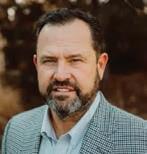 By Van Carlson
By Van Carlson
‘Without action from Congress, or the IRS backing off its assault on our industry, the overreach of power toward micro-captive owners will likely continue, along with its efforts to eventually obtain federal oversight over other parts of the insurance business.’

Apair of federal Tax Court decisions at the start of 2024 are painting a concerning picture that the IRS is abusing its authority and attempting to become a quasi-federal governing agency over the insurance industry. The IRS secured a pair of victories against a form of self-insurance for small businesses known as micro-captive insurance. The cases — Keating v. Commissioner and Swift v. Commissioner — used biased fact patterns to support the unfounded principle that all micro-captives are tax shelters or tax schemes.
Neither decision provided guidance nor clarification of how honest micro-captive owners should structure their captive arrangements to remain compliant with IRS regulations. Without such guidance, small to mid-size business owners are subject to open scrutiny at the whim of a federal agency attempting to seize regulatory control of an industry already regulated at the state level.
These victories are contrary to why the 831(b) tax code was written. Similar to what we are seeing today, this code was originally written during a time in which Americans were saddled by a hardened insurance market. Originally passed in the 1980s, Section 831(b) was designed to empower small to mid-sized insurance companies by excluding part of their income from taxation, allowing them to better compete with larger insurance providers and provide a vehicle of self-insurance against risks that may
not be covered by insurance companies.
The 2015 Protecting Americans from Tax Hikes Act states that companies are eligible for this type of risk mitigation under Section 831(b) of the tax code when the owner of an insured business holds an interest in the insurer no greater than their interest in the business.
In January, IRS Commissioner Danny Werfel disclosed that nearly 1,100 micro-captives are under IRS investigation. Business owners and plan administrators who are caught up in these audits are then sifted through, with the IRS seeking only cases in which wins are virtually guaranteed. Instead of providing a conclusive determination for other taxpayers who can legitimately benefit from using an 831(b), the IRS uses its ambiguous scrutiny as a deterrent from using these plans, which in some cases can provide a lifeline to small to mid-size businesses.
The IRS has made clear its dislike of micro-captives and is working to eliminate them through its overreach of power and intimidation. This gross misuse by a bureaucratic agency directly contradicts congressional support for the existence of micro-captive insurance. To put it bluntly, the IRS is undermining the laws passed by our nation’s elected representatives and wants to put insurance regulation in the hands of the federal government.
In December, multiple members of the U.S. House
Committee on Ways and Means Committee wrote to Werfel to express their disdain about the IRS’s treatment of micro-captives. Members of Congress called for the IRS to work with the insurance industry to develop a mutually agreeable path forward for small to midsize businesses to utilize this section of the tax code without fear of retribution.
The decision in Keating is concerning. In fact, the judge alluded to how the courts believed insurance companies should be regulated.
The McCarran-Ferguson Act of 1945 provides the framework for how the insurance industry is regulated in the U.S. — the federal government can define insurance for federal tax purposes but is prohibited from overreaching into the regulation of insurance, which is left to the individual states.
Without action from Congress, or the IRS backing off its assault on our industry, the overreach of power toward micro-captive owners will likely continue, along with its efforts to eventually obtain federal oversight over other parts of the insurance business.
The question of overreach by the IRS isn’t a question of if it will stop, but rather a question of when and how. The ripple effects will have far greater implications on the insurance industry as a whole than anything else that may come of this IRS case.
Carlson is founder and CEO of SRA 831(b) Admin. He has more than 25 years of experience in the risk management industry.
50 | INSURANCE JOURNAL | APRIL 15, 2024 INSURANCEJOURNAL.COM



theinsurtechsummit.com INTERACTIVE VIRTUAL EVENT • MAY 21 AI for PAYMENTS AI for CLAIMS AI for UNDERWRITING AI for CYBER SECURITY AI for CUSTOMER EXPERIENCE AI for TALENT ACQUISITION AI for EVERYTHING InsurTech SUMMIT 2024 PRESENTING SPONSORS SUPPORTING SPONSOR A VERY SPECIAL THANKS TO OUR SPONSORS






Risk is everywhere. In everything. With Applied Underwriters by your side, the gears of commerce, innovation, and exploration keep turning. Experience the unrivaled heart and unwavering service that only Applied delivers.
Learn more at auw.com or call (877) 234-4450.
©2024
Underwriters, Inc. Rated A(Excellent) by AM Best.
Applied



































































 By L.S. Howard
By L.S. Howard

 By Elizabeth Blosfield
By Elizabeth Blosfield

























 By Matthew Ferguson
By Matthew Ferguson









 By Andrea Wells
By Andrea Wells






 SBy Brandon D. Hollinder, Esq.
SBy Brandon D. Hollinder, Esq.



 By Chris Burand
By Chris Burand

 By Bill Wilson
By Bill Wilson




 By Mary Newgard
By Mary Newgard
 OBy Travis Hodges
OBy Travis Hodges


 By David Dawson
By David Dawson

 By Van Carlson
By Van Carlson









